This review was provided for free, but Trek Coquitlam supplied a temporary demo bike for me to test. My goal is to be transparent and unbiased with you, this video and writeup are not meant to be an endorsement of Trek products. I welcome your corrections, additions, and feedback in the comments below, and the Trek electric bike forums.
Observations:
- Trek is one of the “Big Three” North American bicycle manufacturers (including Specialized and Giant). The company launched in 1975, specializing in hand-brazed steel frames, and then expanded to 90 different countries. In my opinion, they are one of the very best ebike makers with high quality designs, above average support, and a wide range of frame configurations, sizes, and accessories.
- This was the first time I had ever tried the TQ drive system, and I was very impressed with the power. It’s compact, fairly quiet, and feels natural, but doesn’t sacrifice torque or high RPM support! I spun as fast as I could during my test rides, and the motor kept up very well.
- The Domane+ line of electric bike includes carbon fiber and aluminum builds. This review is focused on the SLR carbon fiber models. You can get a 2×12 Shimano Dura-Ace 24 mechanical drivetrain or the 1×12 SRAM eTap electronic divetrain featured on this ebike. The 2×12 is setup for road use with a narrower bar and tires while the 1×12 has a flared bar and knobby gravel tires. It’s amazing that each build comes in five colors and seven frame sizes!
- A fun bit of trivia for you here, the Domane+ name is an anagram of the other Trek road bike models including Madone (racing road) and Emonda (light weight climbing)! It’s their comfort endurance geometry.
Pros:
- This is the lightest full sized electric bike I have ever tested and reviewed. Weighing just 28.5lbs, it’s easy to lift and carry up stairs, mount on bike racks, and pedal without assist. Still, the motor is powerful and offers noticeable support, even in the lowest of three assist levels. Trek claims it can reach 60mi per charge on this lower level, which is excellent considering the lower capacity 360wh battery pack.
- For those who wish to ride farther, Trek is offering a bottle sized range extender battery pack that actually fits into the seat post bottle cage and plugs into the charge port just below. You could conceivably carry multiple 160wh range extenders. Each one weighs just 2.09lbs.
- The Domane+ geometry is tuned for comfort and endurance riding, ideal for the Paris–Roubaix race. I found the gravel tires, short nose saddle, padded grip tape, and IsoSpeed decoupler seat post interface to provide vibration dampening qualities that felt great during my test rides.
- Clean aesthetic with near complete internal cable routing that starts at the stem, enters the steer tube, and exits near each component. Note that all non-frame hardware is black to create a professional matching look.
- I was very impressed by the TQ motor. It has a very small width of just 135mm, allowing the q-factor of the bike to be 163mm. It weighs just 4.07lbs, while most mid-drives are at least 6lbs. Based on my ride tests, I believe that it provides well over 120 RPM pedal support, so you can downshift and spin fast approaching a hill without losing motor power. The motor also cuts power extremely fast once you reduce pedal pressure and slow or stop your cadence. TQ stands for technology and quality, in case you were wondering! The Trek Fuel EXE full suspension mountain bike uses this same motor, in case you’re looking for a light mountain bike.
- This is a small thing, but I appreciate how the TQ motorized bottom bracket introduces a bit of backpedal friction, so the cranks won’t spin out of control if you slip off. It doesn’t produce a loud clicking noise when pedaling backwards, as shown in the video review above.
- For all of the Domane+ eTap models, which offer electronic shifting from SRAM, the derailleur is powered by the rechargeable ebike battery! You don’t need to worry about removing and charging a little battery pack on the derailleur like so many other models. Those batteries add weight to the derailleur, can run out before the bike, can get mud and water damage etc. It’s so convenient that everything electronic runs off the same main bike battery for this model!
- Shifting is extremely fast and quiet. I’ve heard some other electronic derailleurs that produce a louder electronic chirping noise when changing gears. The single click paddles work well, and it will shift multiple gears if you hold the paddle in longer.
- Very impressive deep dish carbon fiber wheels on this model. The rims and bladed spokes are aerodynamic. Each wheel uses just 24 spokes vs. 32 or 36 on most electric bikes I cover. This thing is very high performance.
- The brake levers have plastic paddles just below with single click to shift gears down and up. There are small circular buttons mounted inside the hoods that allow you to change assist levels down or up using your left and right thumbs respectively. It’s very intuitive and natural, and it doesn’t block any of the hand positions (hoods, drops, flats)… If you hold the left button, it will go to assist level zero for acoustic cycling. If you hold the right button it will change the display readout to show Battery Charge Level Percentage, Trip Time, Odometer, Human Watts and Motor Watts, Current Speed, Average Speed, Pedal RPM, and even Range Estimate.
- It’s cool that the frame has hidden fender mounts, on the inside of the fork and rear stays, although I believe you need to be running narrower tires to use them. The 40c wide gravel tires that come on this build are max width.
- The Trek marketing videos and descriptions explain that the TQ motor is 1.5 to 2 times quieter and less distracting than their other ebikes. I still noticed some electronic whine, but it is quieter than the higher powered Bosch motors that most of their other ebikes utilize.
- Trek designs their paints and decals with some reflectivity to add safety. They offer a bunch of aftermarket Bontrager rechargeable lights to add to handlebars, seat posts, helmets, and clothing. I think it’s great that they made a white color scheme option, since it’s highly visible in low light conditions.
- The chainring is made from light weight aluminum alloy and has a narrow wide tooth pattern to lock onto the chain, reducing drops. I noticed the carbon fiber crank arms have plastic protection at the ends, in case of ground strikes, and plastic stickers on the sides to reduce scuffs. The chain stay also has a clear plastic sticker to prevent chips and protect the paint.
- The display panel was easy to read in bright and dark conditions, it only has one button and is intuitive to interact with. I found it to be simple and reassuring. I love that it shows 10 bars on the battery charge level infographic, and that there’s a percentage readout and range estimate! Very good battery level feedback.
Cons:
- These electric road bikes are very expensive, especially this particular build at nearly $13k. The most affordable build is $8,499 for the Domane+ SLR 6. I feel that in addition to the amazing frame, components, and drive system, you are also getting value from the vast network of dealers and excellent warranty here. You can spend a lot less on one of the aluminum alloy road models, but they don’t use the TQ mid-motor drive system, which is more efficient and more powerful depending on the gear you choose to pedal with.
- Since the primary battery is semi-permanently mounted inside the downtube (removable for service or replacement only), it’s less convenient to charge. Perhaps you’re commuting to work with this platform but there’s no plug near the bike rack. At home, you might have to leave the bike in a hot or cold garage which will impact the battery lifespan and daily range. I believe that Lithium-ion batteries do best in cool, dry environments and 20% to 80% fill.
- While I love that Trek chose a standard 31.8mm circular handlebar, which is easy to swap for alternative bars, the seat post is more unique and proprietary. It’s not a circular design, the back is flat. This helps to keep it straight, and might support some bend or vibration dampening in combination with the IsoSpeed seat tube mount… but you cannot swap the post out for a true suspension seat post like the Kinekt products as easily.
- The bike doesn’t ship with pedals or a kickstand, it doesn’t even offer kickstand provisions at the center or rear. This not uncommon for high performance road bikes, but it means that the bike could tip over more easily. This is especially true if you’ve got the charging cable plugged in and someone trips over it or pulls it. In general, the charge port is low on the frame and the charging cable could get snagged on one of the crank arms. I understand that they located it here for use with the Range Extender battery, which needs to plug in easily and stay out of the way while pedaling.
- Compared to most of the other city and mountain electric bicycles that Trek offers, this motor and battery pack are weaker and lower capacity. They fit the light performance build of the Domane+ but I would call this a more active ebike that depends on rider input. That said, I would call the performance above average. I prefer this TQ to the Fazua and Specialized light weight systems that I have tried. And I love that it’s a Class 3 speed pedelec in the US markets!
- There’s no USB charging port on the display panel or battery pack for maintaining portable electronics, and the 2″ top tube display panel offers limited readouts. Consider using the optional Trek Central smartphone app (for iOS and Android) for motor tuning, mapping, and more ride feedback… but you’ll have to depend on the phone battery alone.
- This is a small point, but you have to look farther down to see the integrated display panel on the top tube than if they were using a bar-mounted display. I love how clean and open the handlebar is, making a phone mount very easy. I’m not sure if you can turn the top tube display off if the light bothers you during night rides?
- I love that they chose hydraulic disc brakes for this model, even though the rotors are fairly small at 160mm diameter vs. 180mm+ that’s probably fine for a light weight road bike. The brakes appear to have an aluminum alloy core for heat dissipation, which is important for a higher speed Class 3 model like this.
- I wonder if Trek will partner with Redshift Sports Shock Stop or design a stem suspension element for their high speed road models at some point? I saw this from Specialized with the Future Shock and love how it performed. I mention this more for the non eTap models with the smoother lower volume road tires. Comfort was good on the bike, but I get more fatigue riding faster and farther on electric vs. acoustic.
- I believe this bike is only available in high step frame style. This may be due to the increased strength it offers, allowing for the light weight carbon fiber build. Still, it requires a tall standover height, which may exclude some riders.

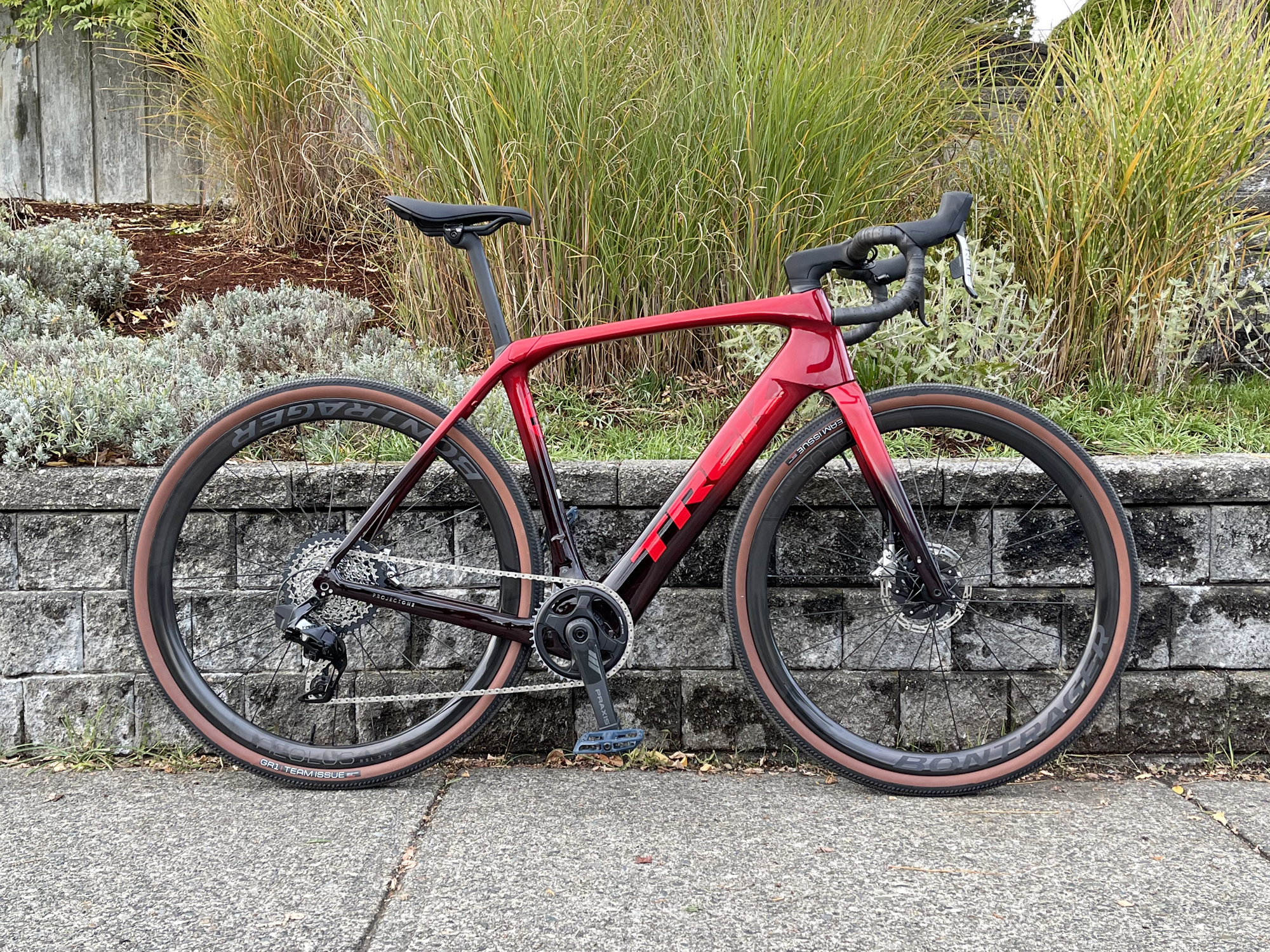


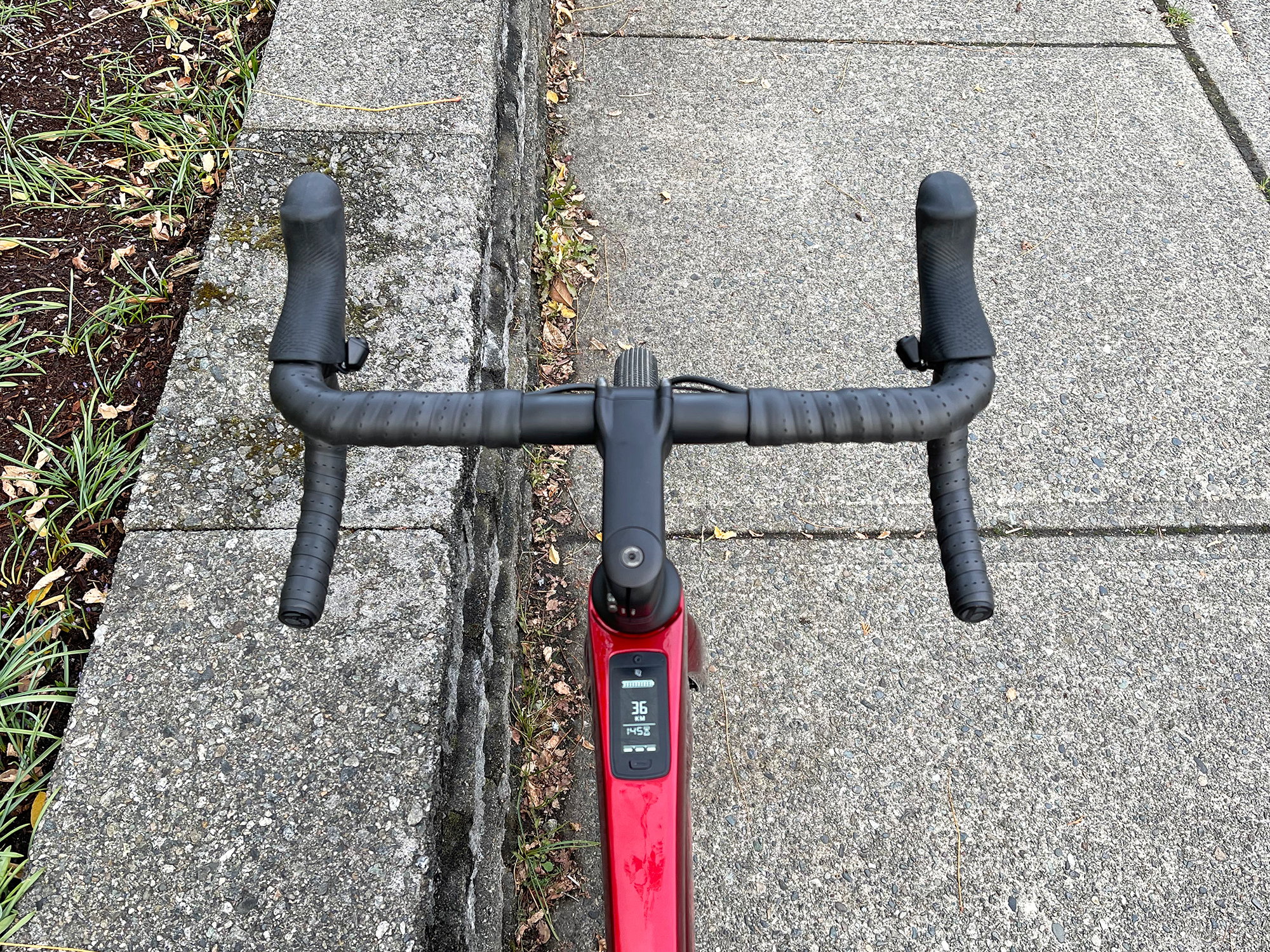
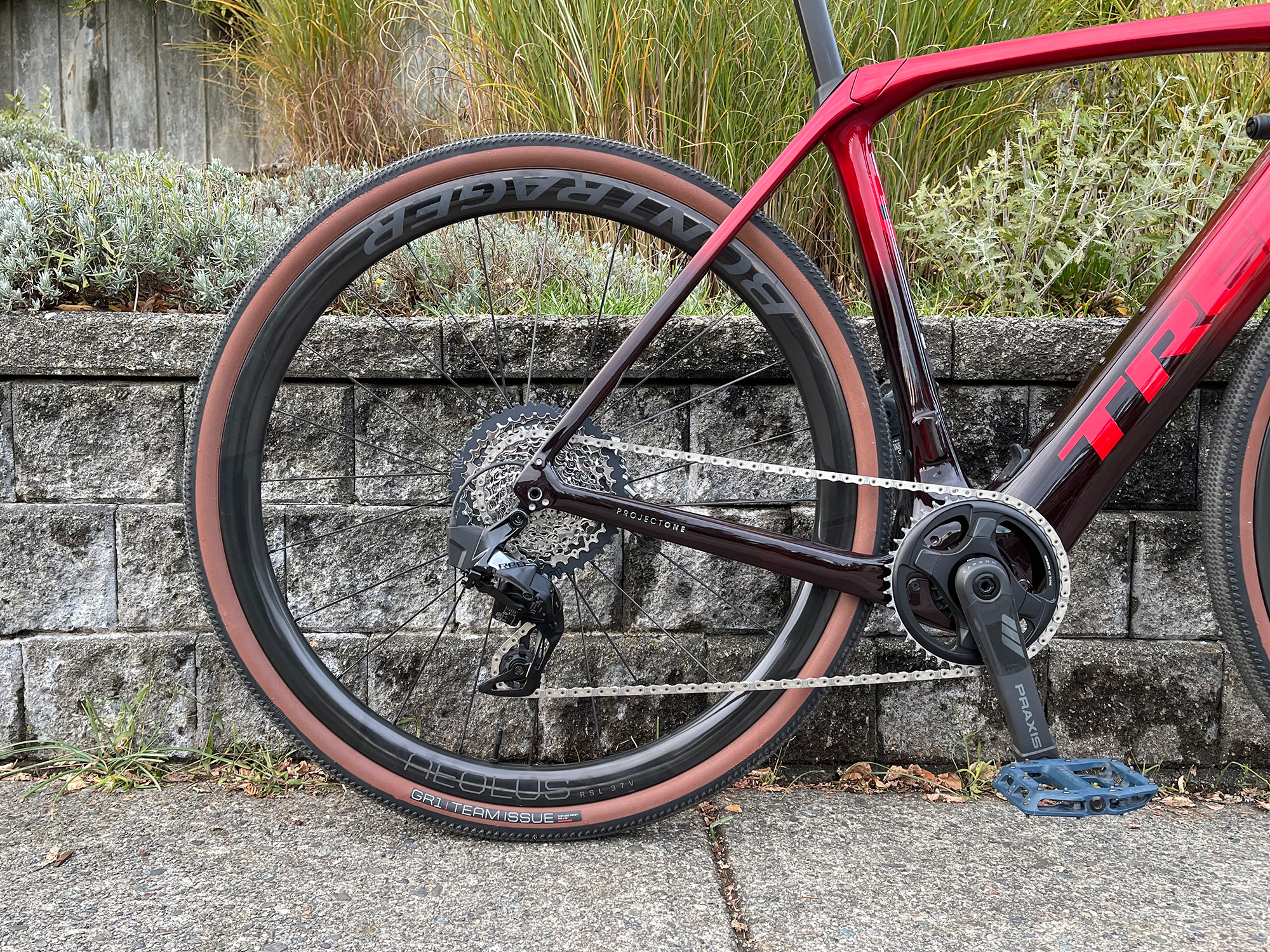
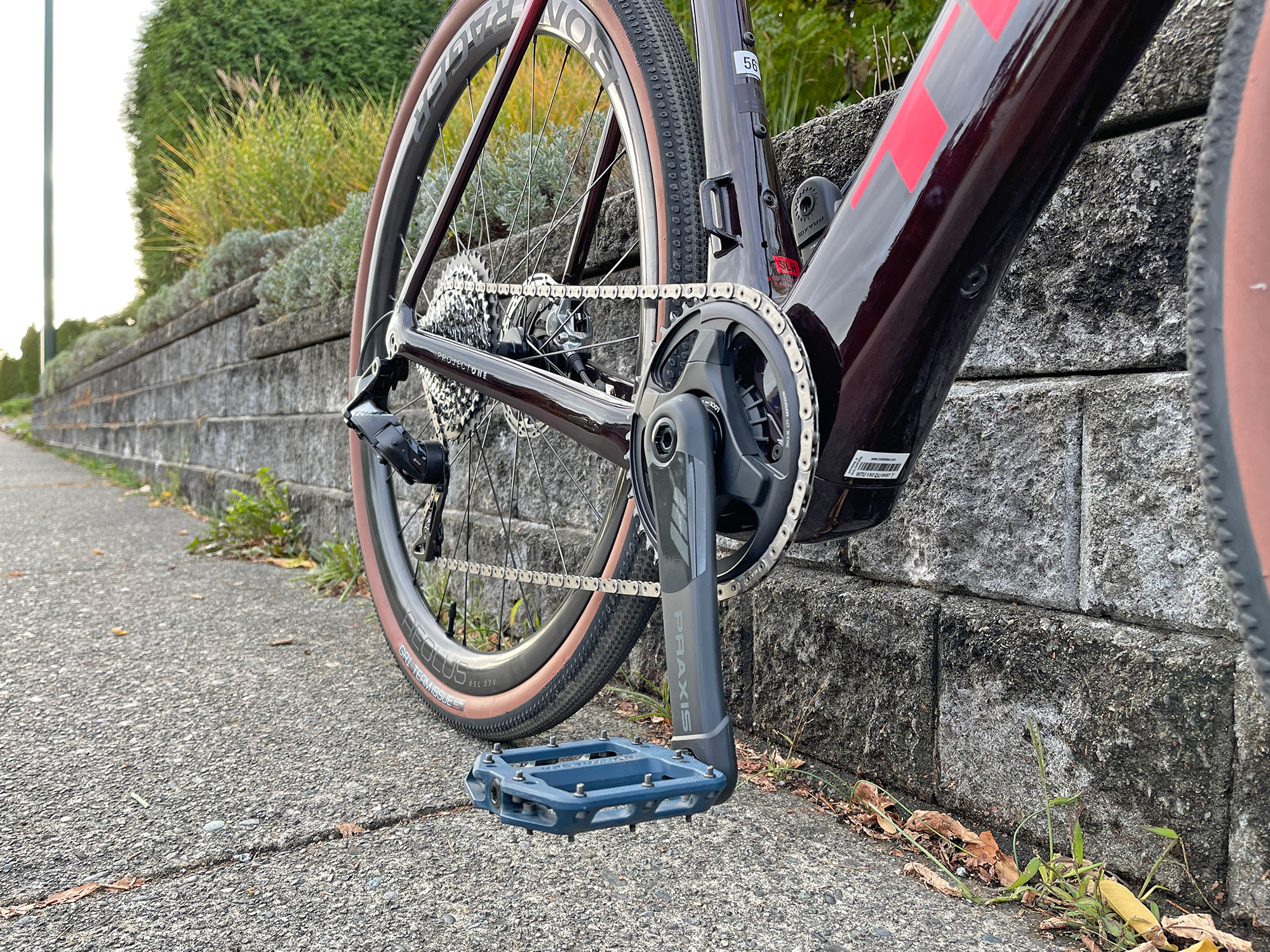


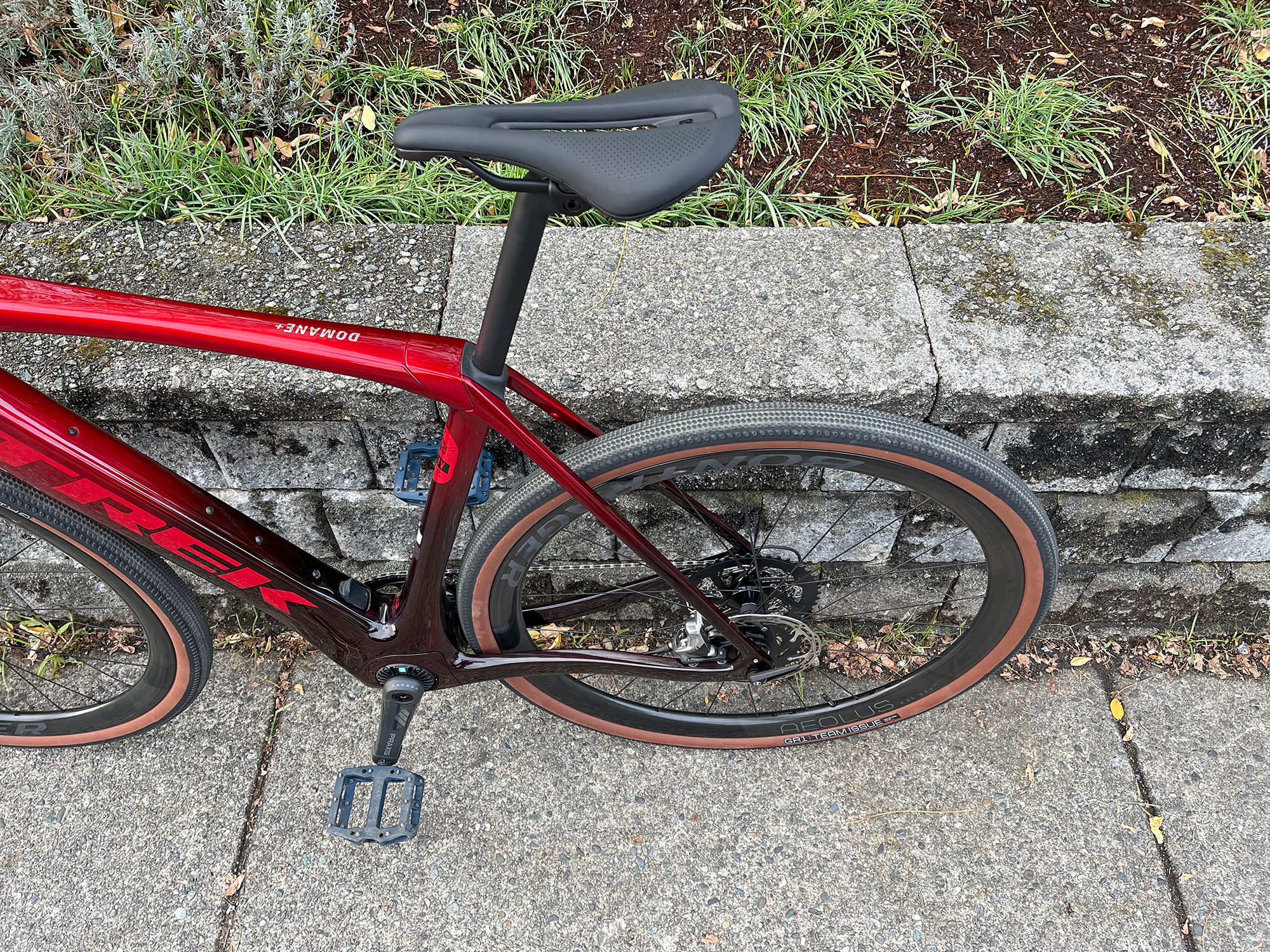

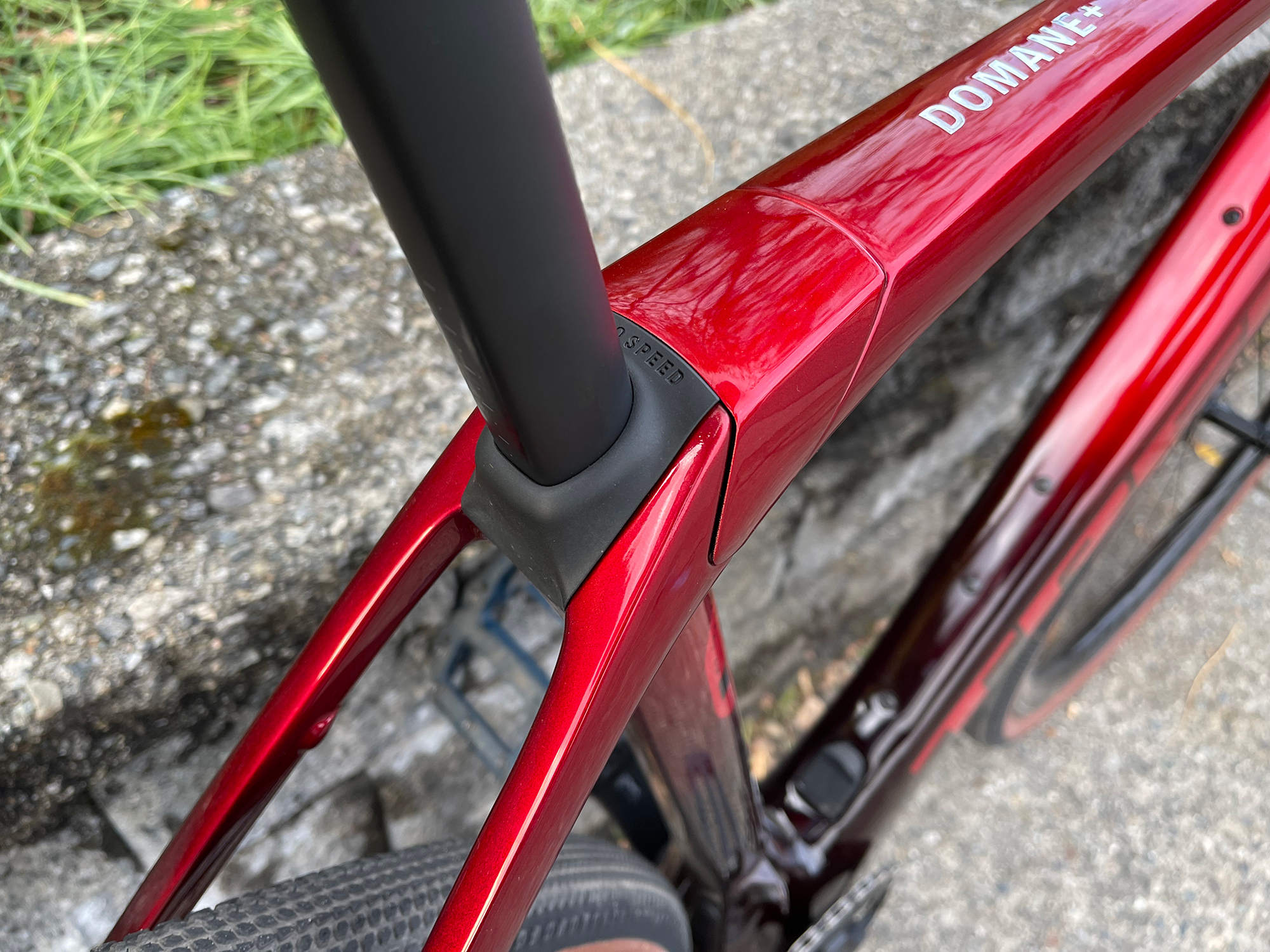

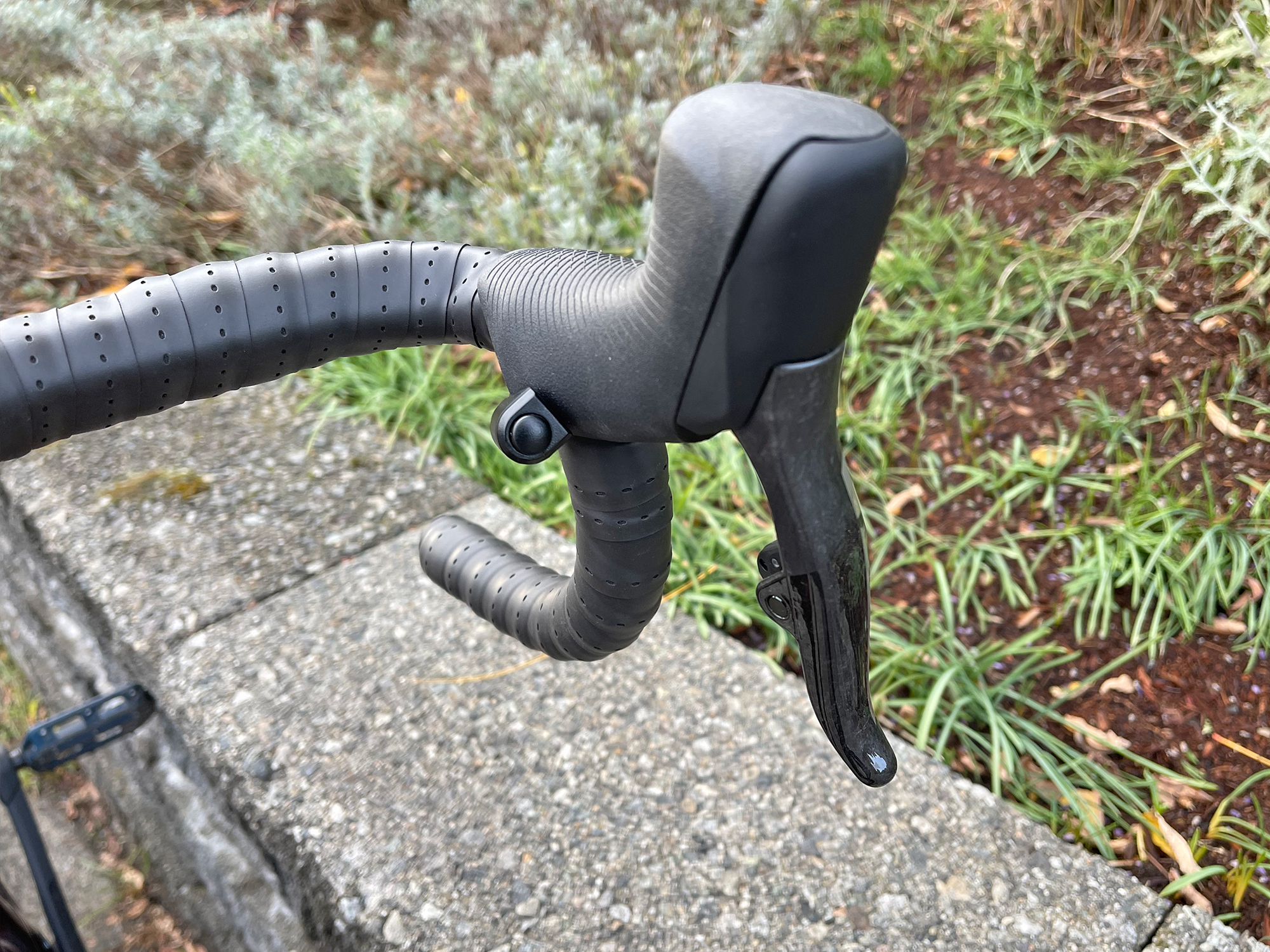
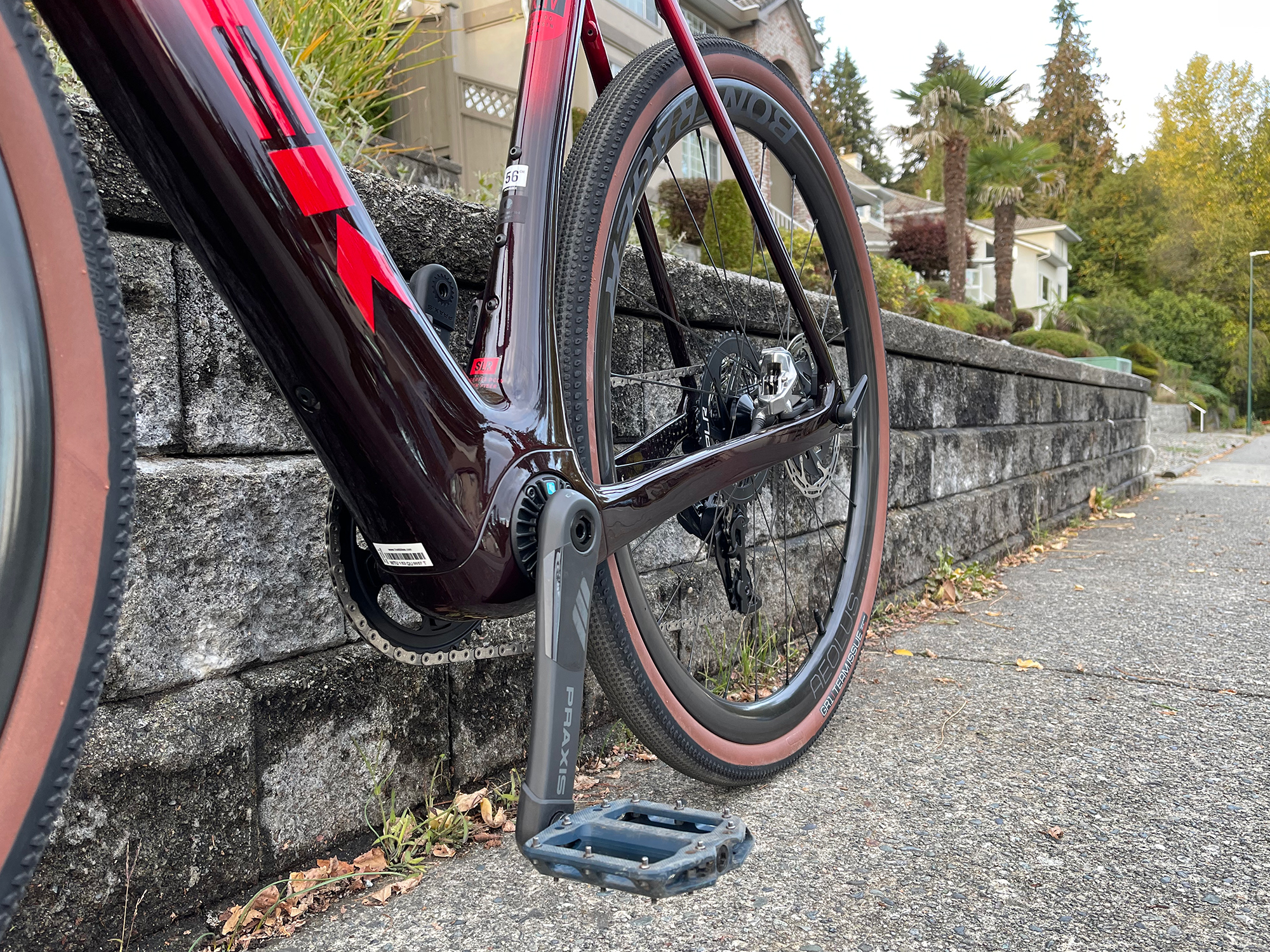
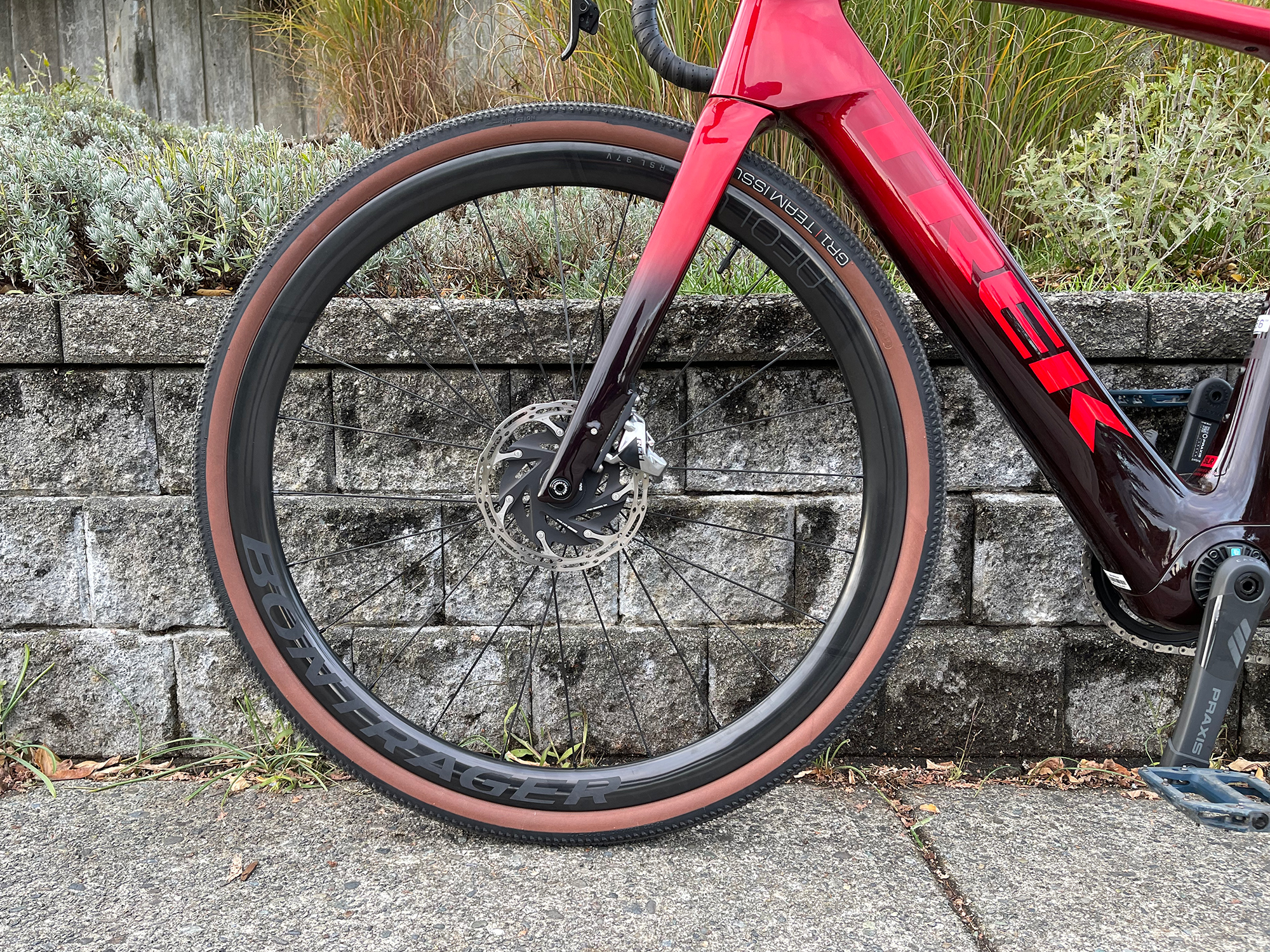
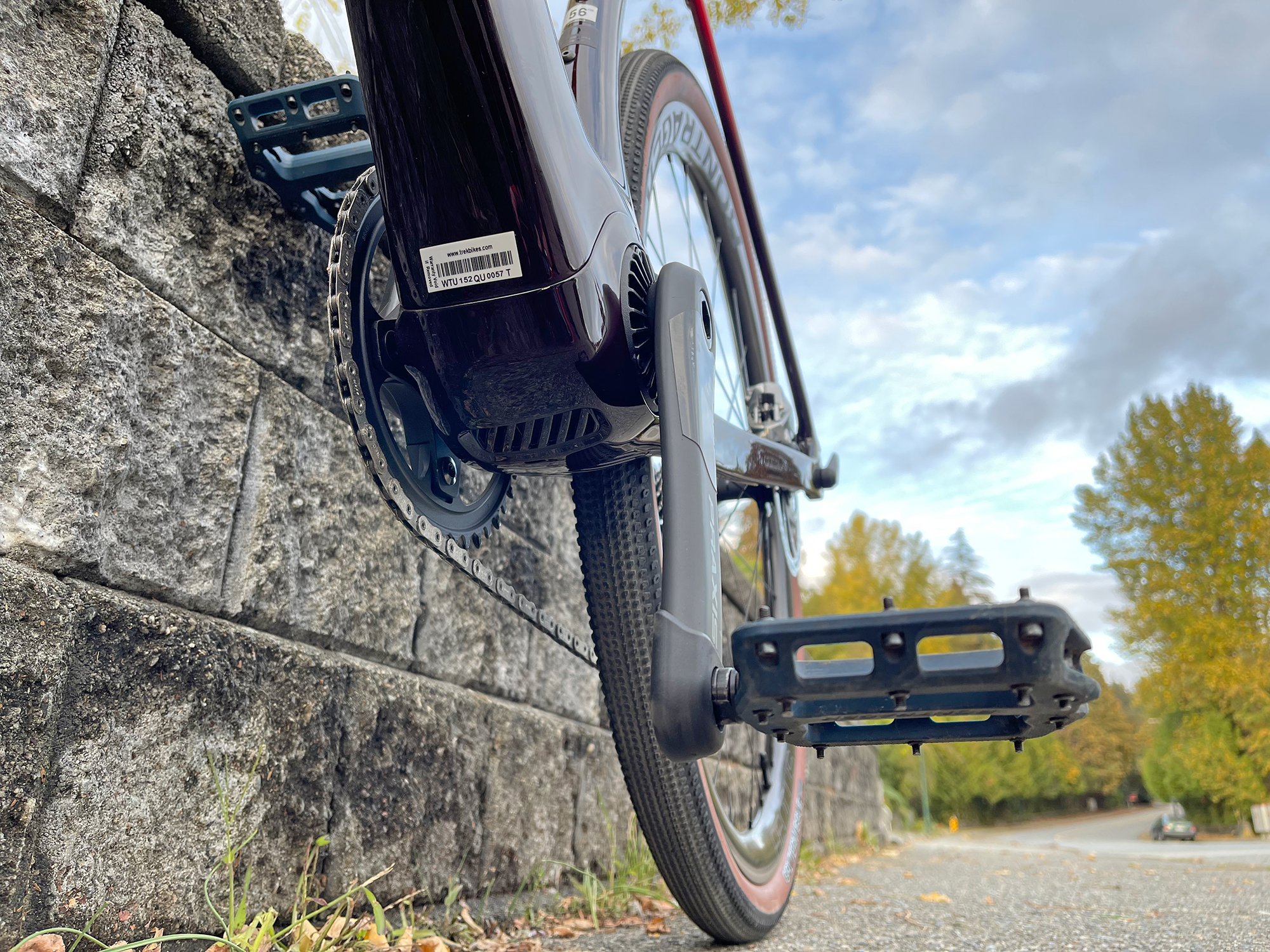
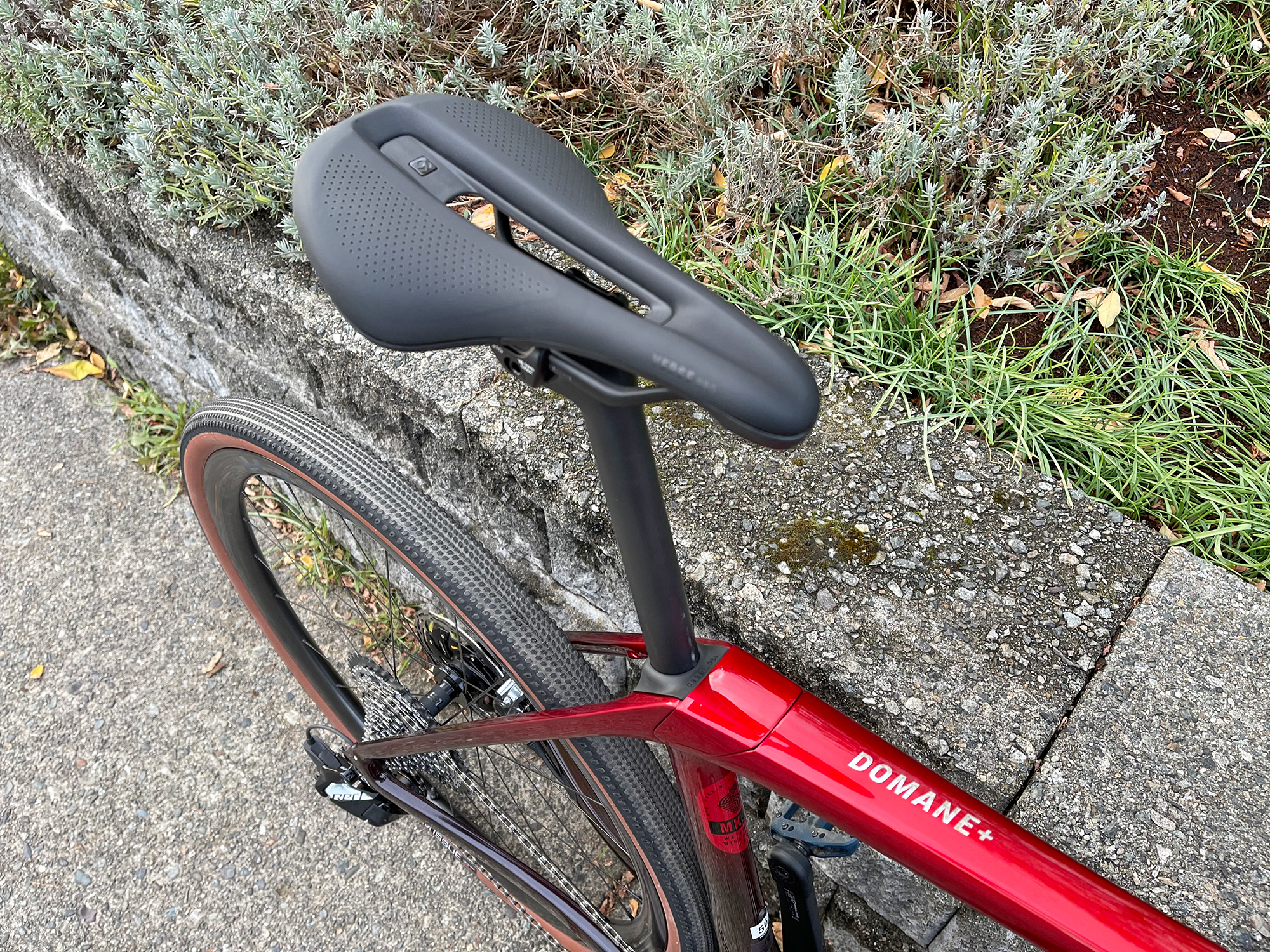
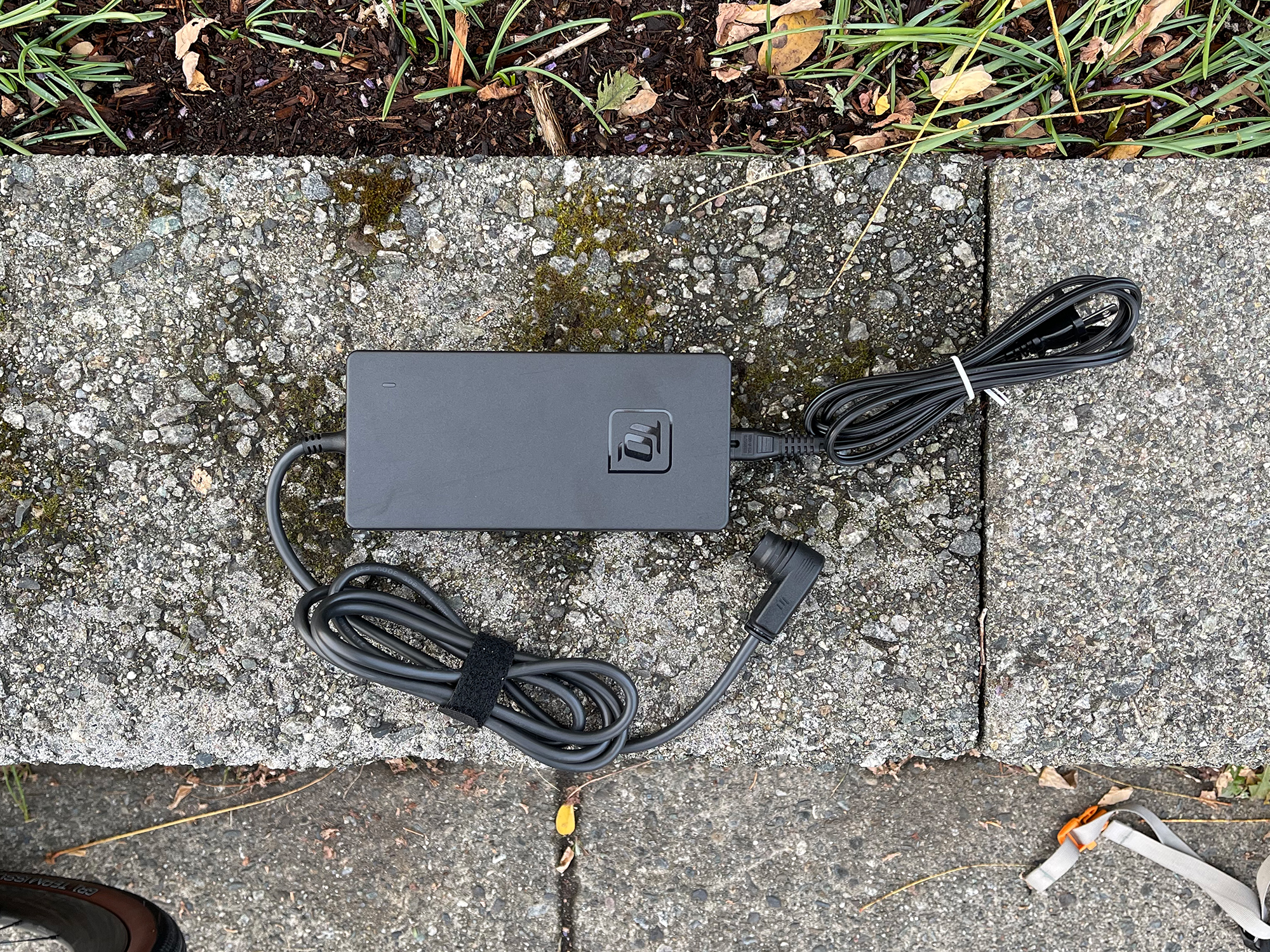
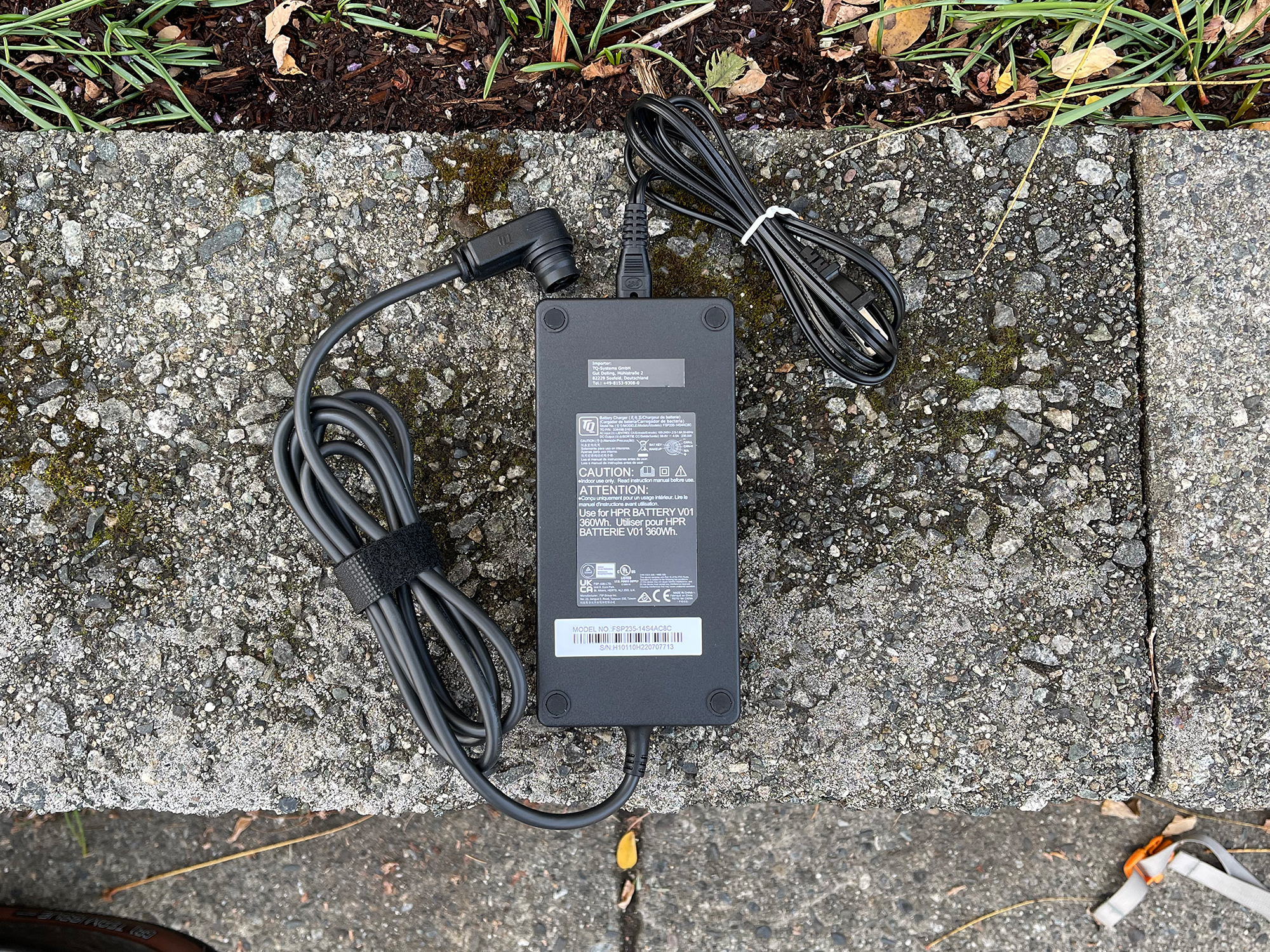
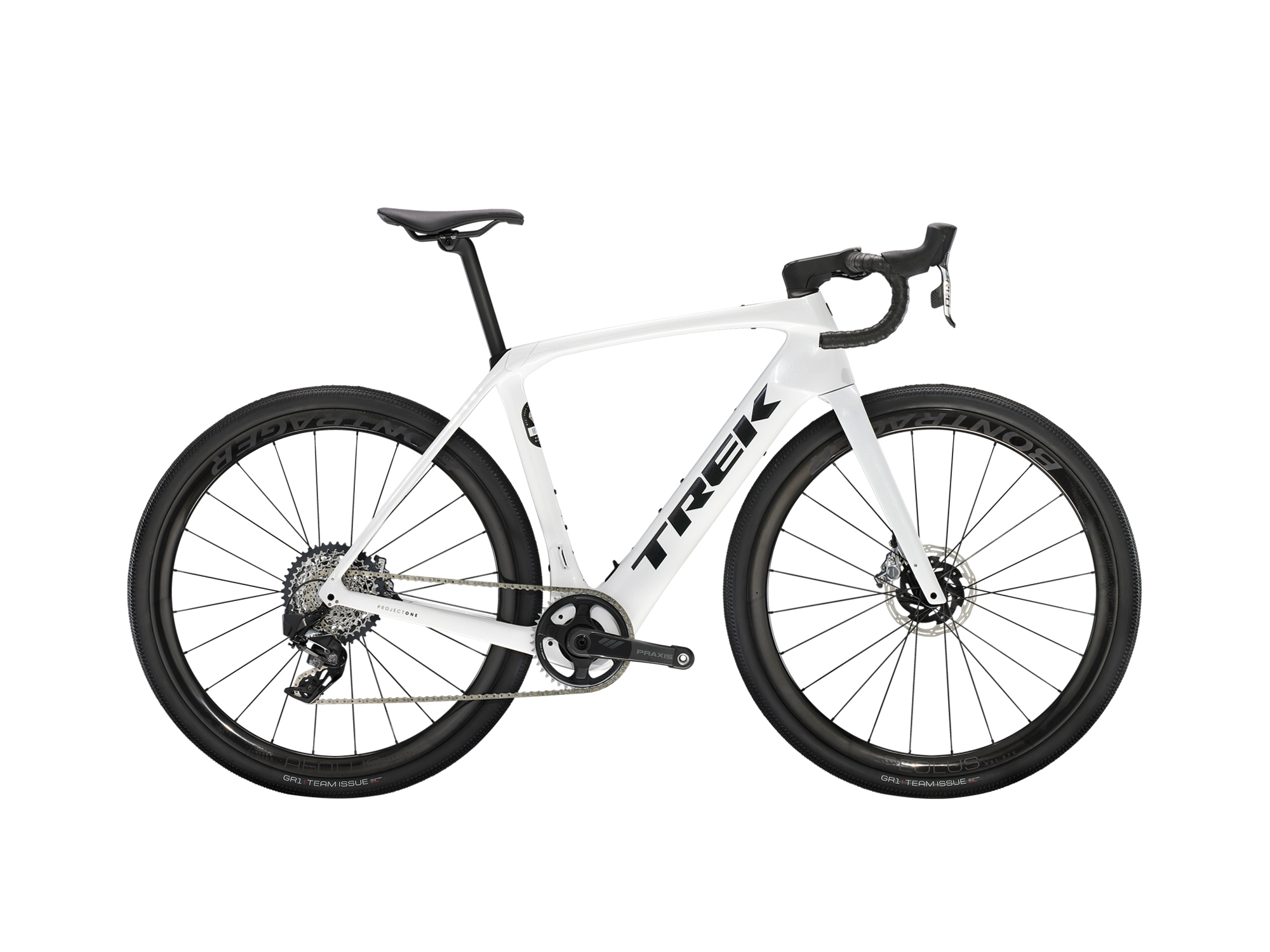
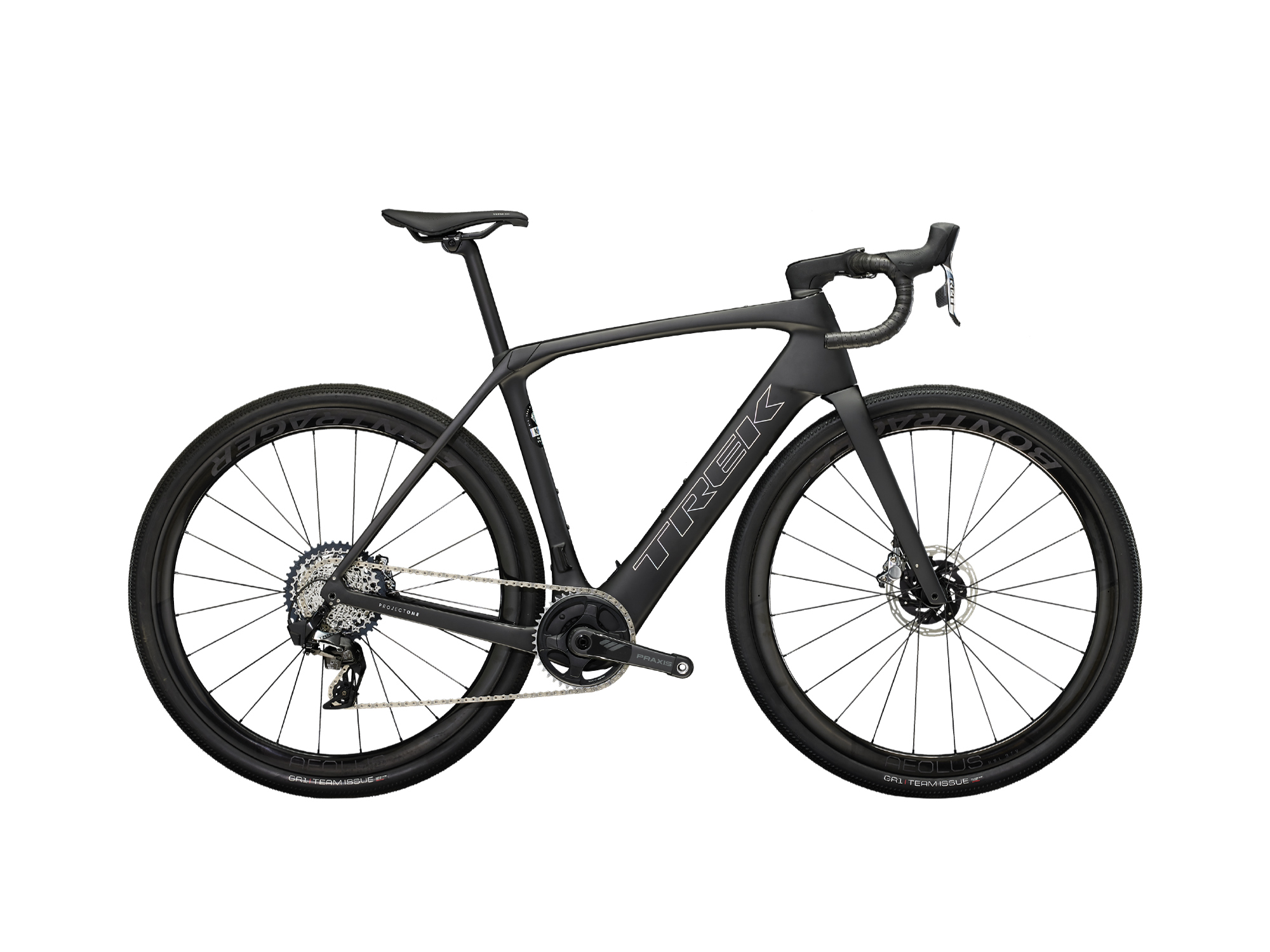
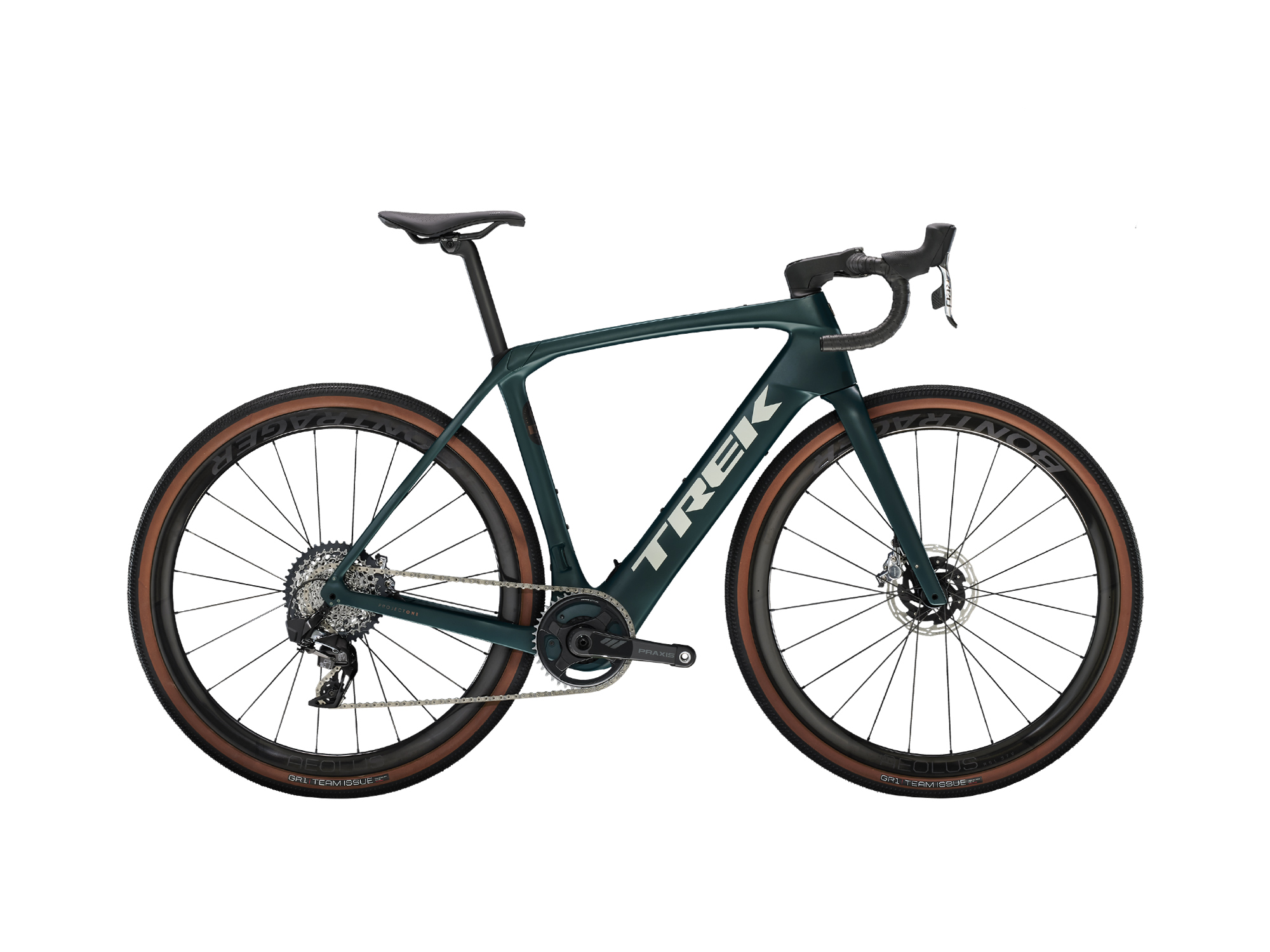
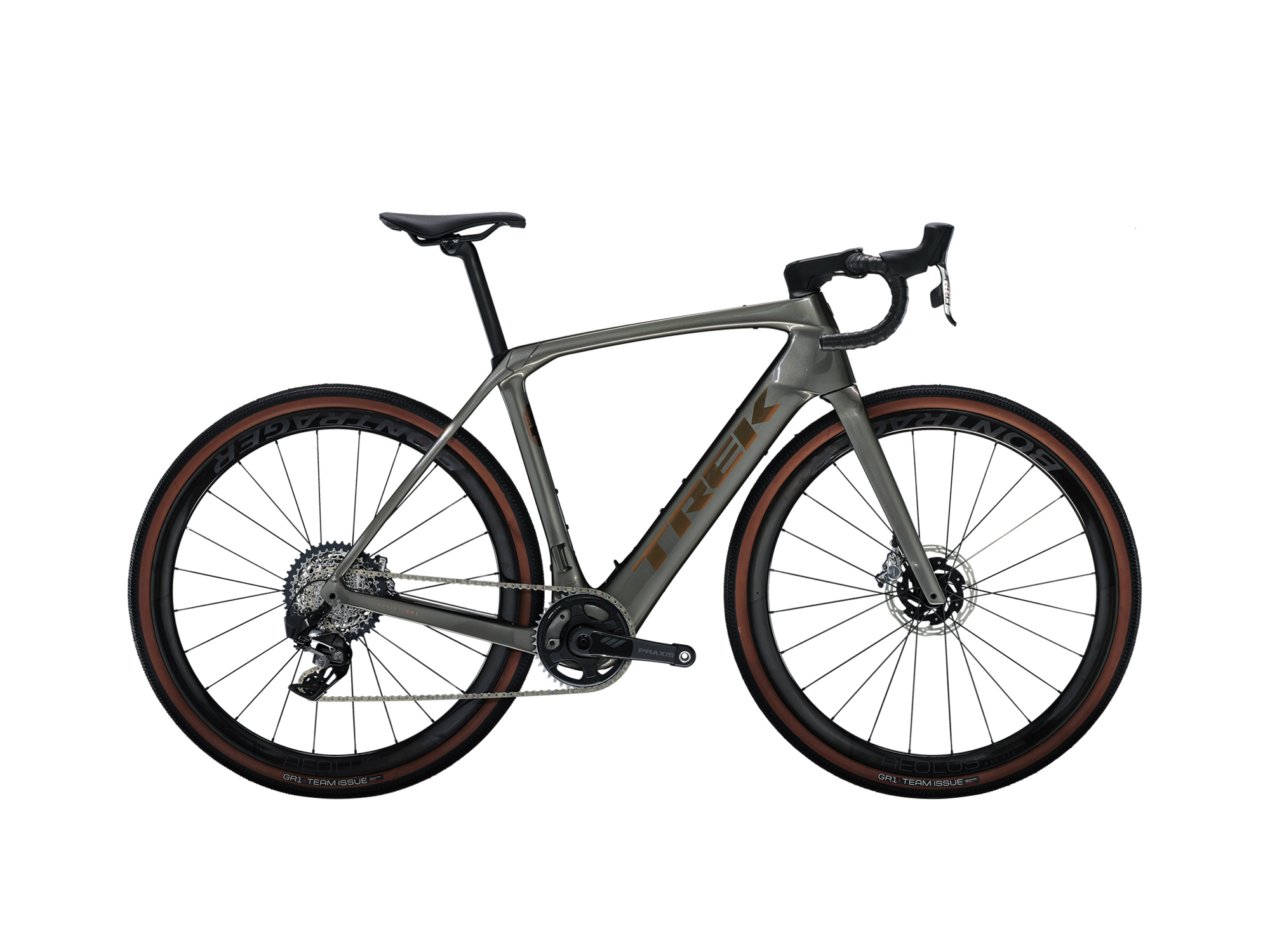
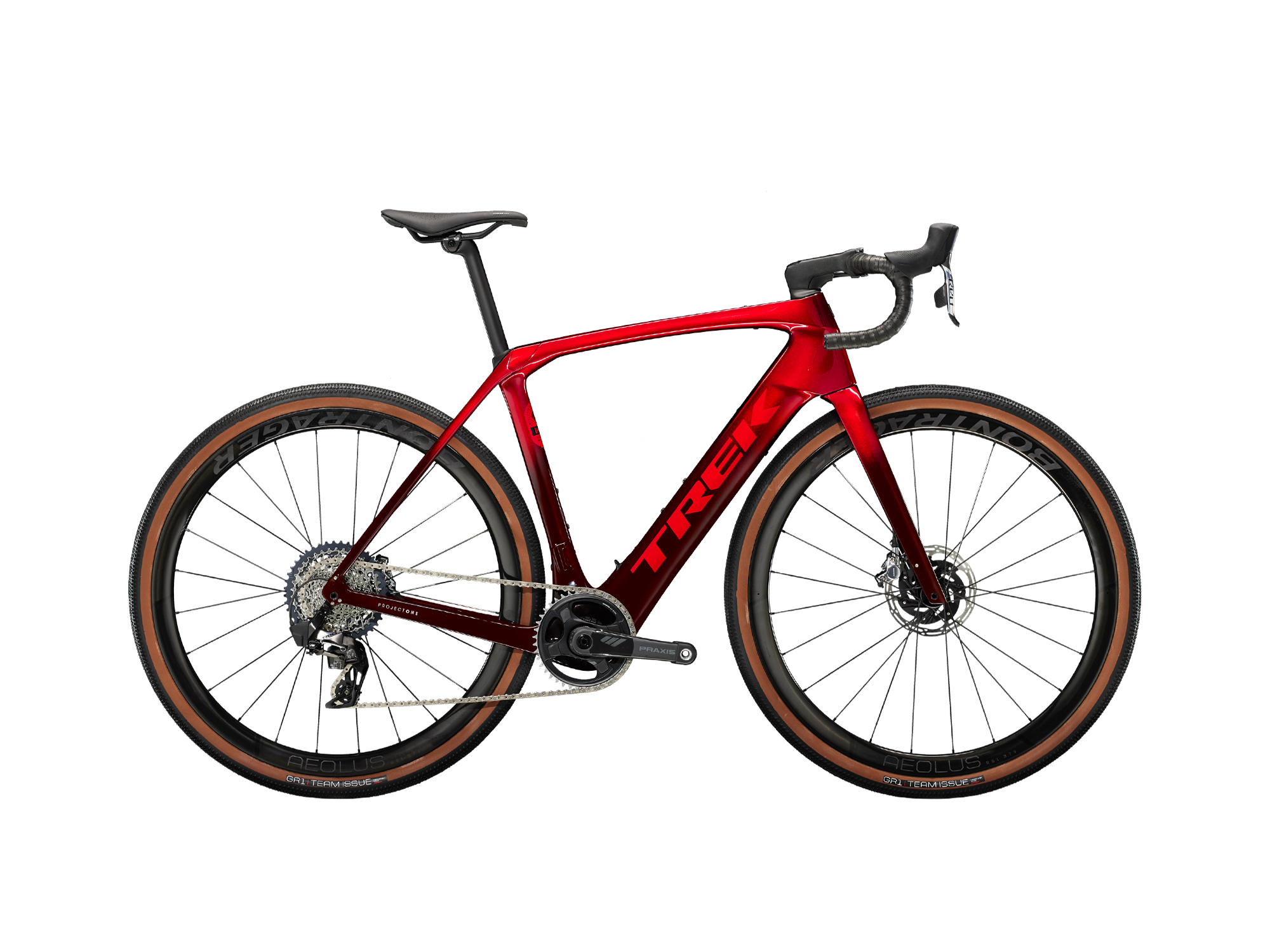
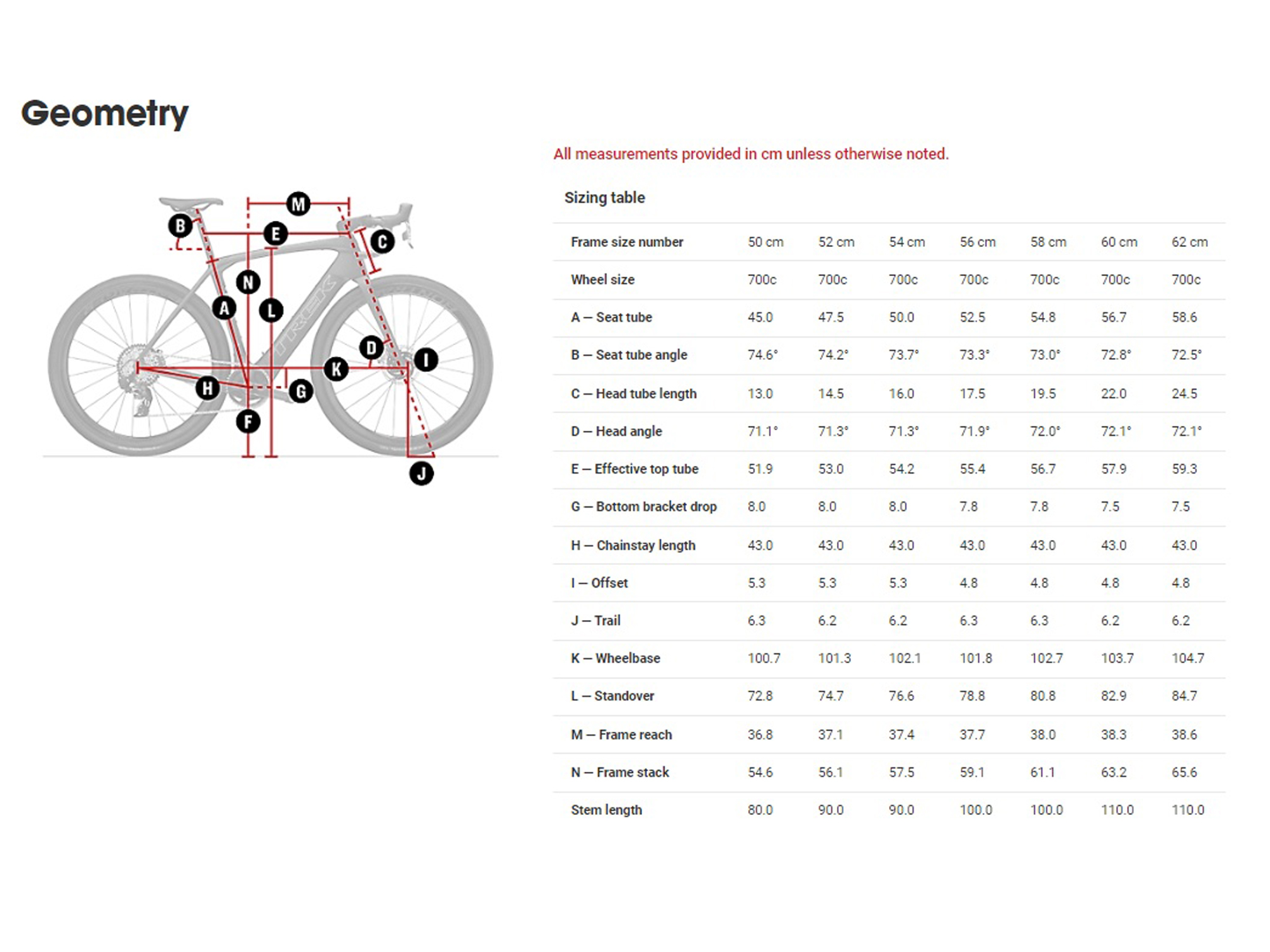

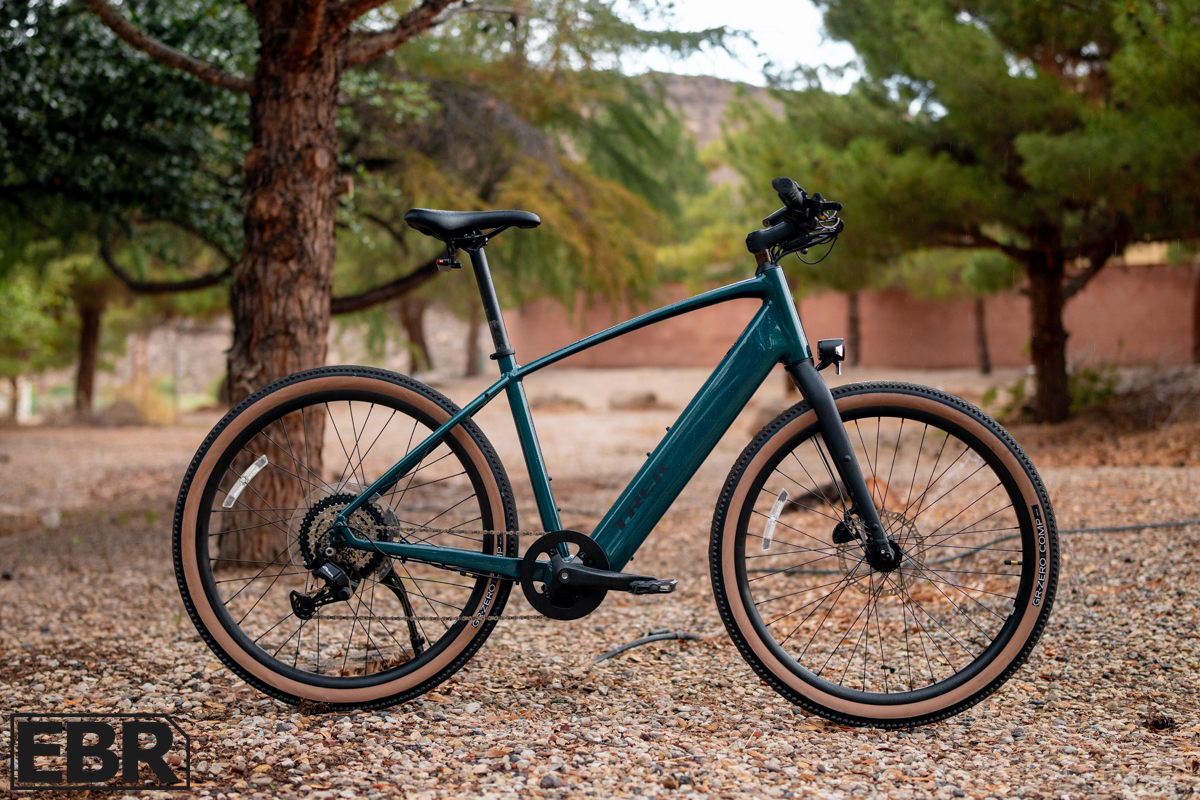
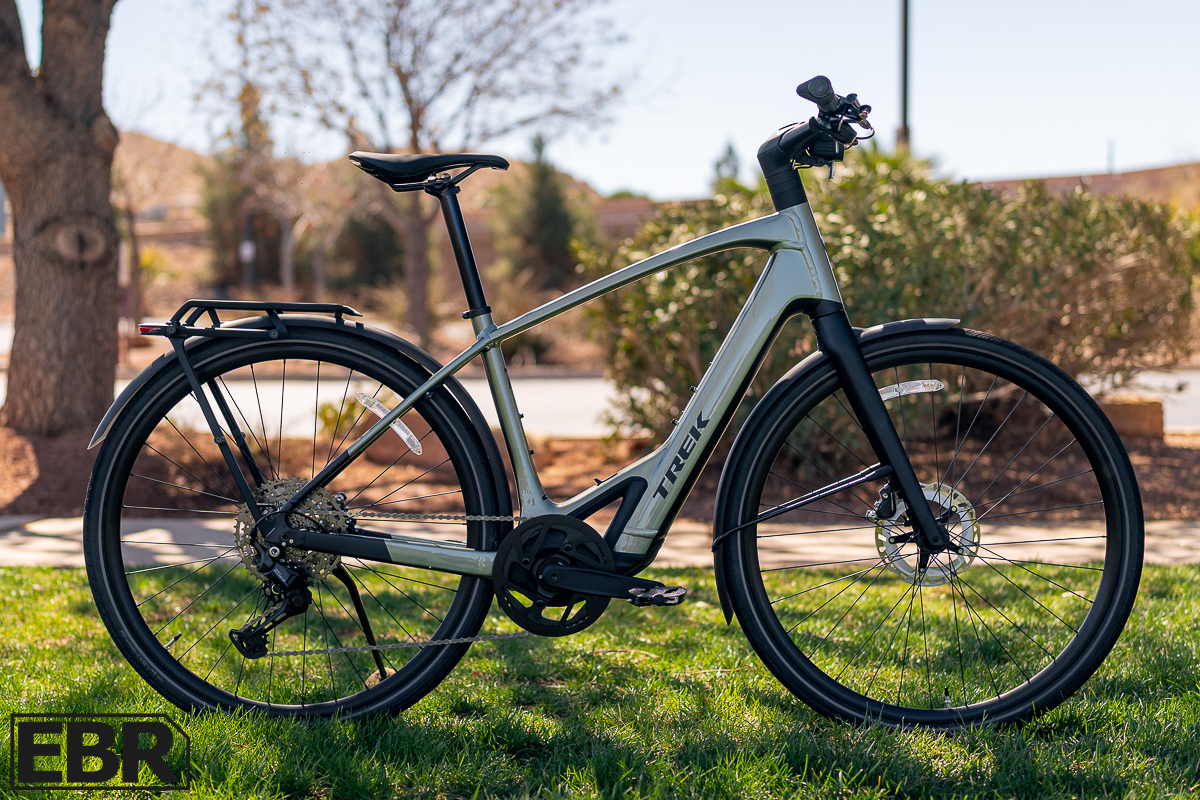
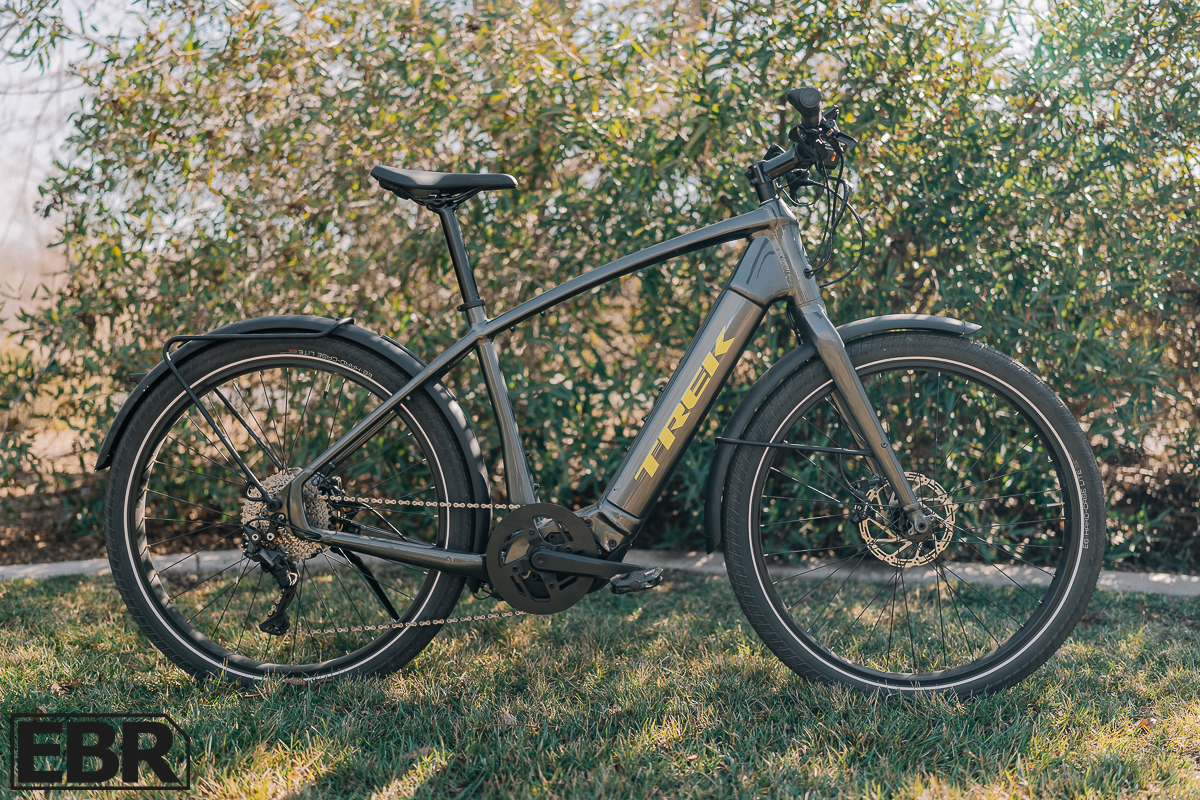
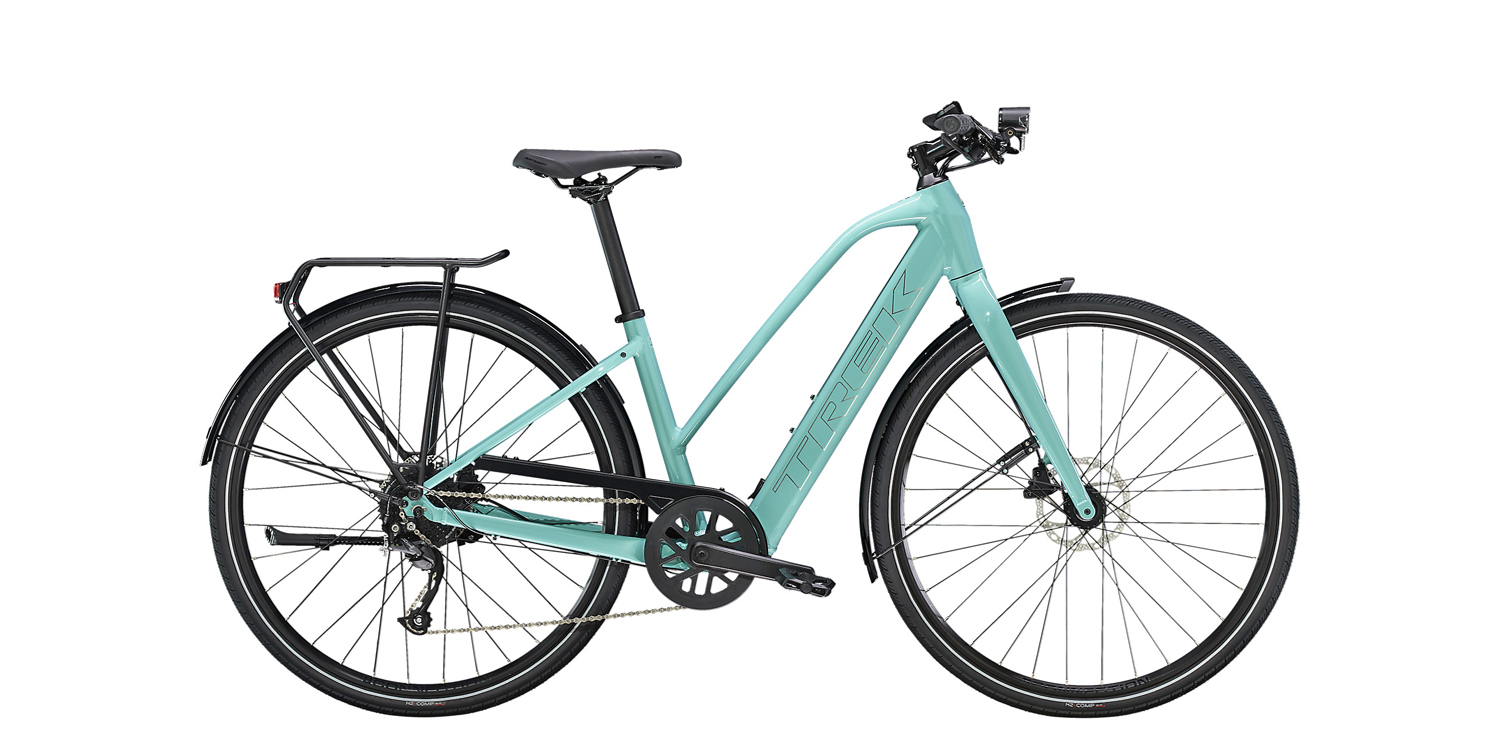
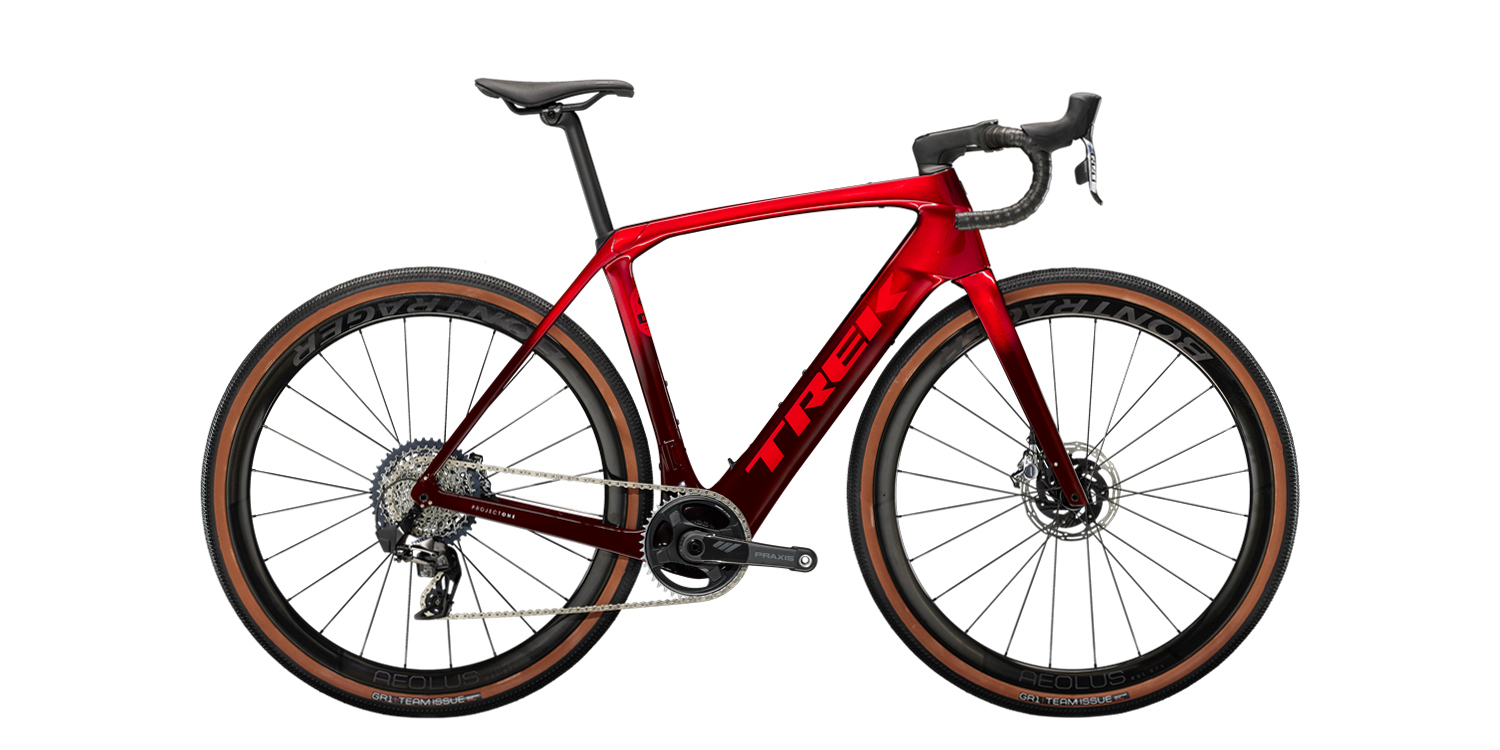
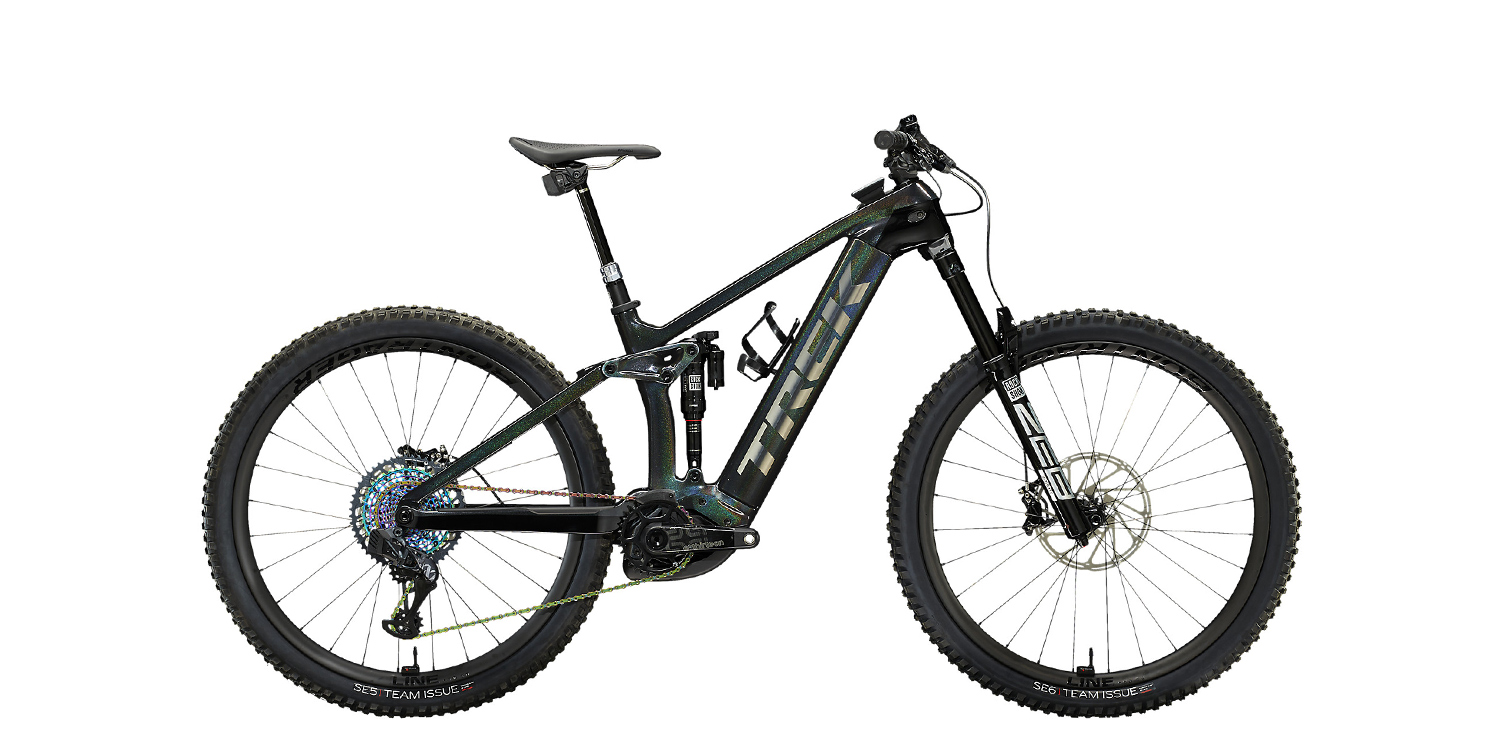
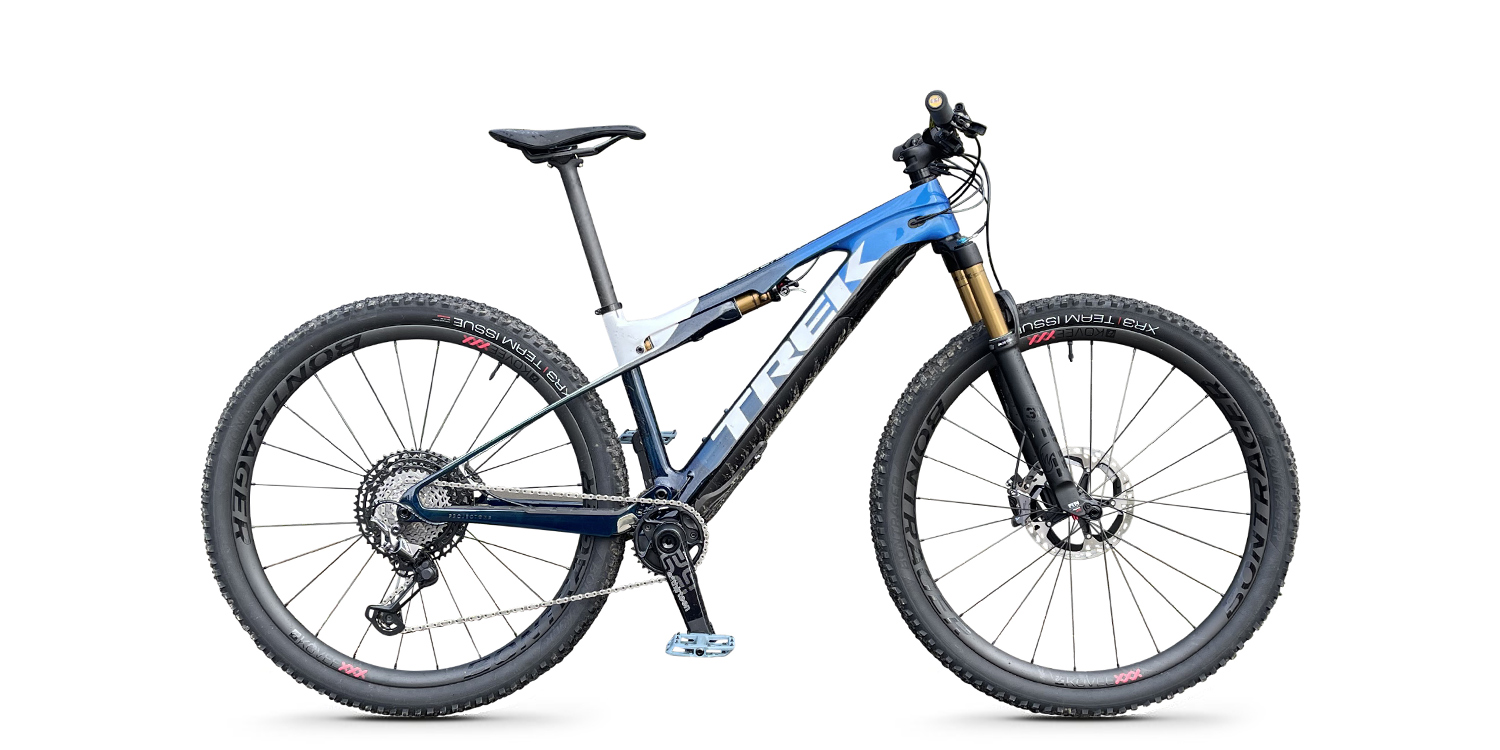
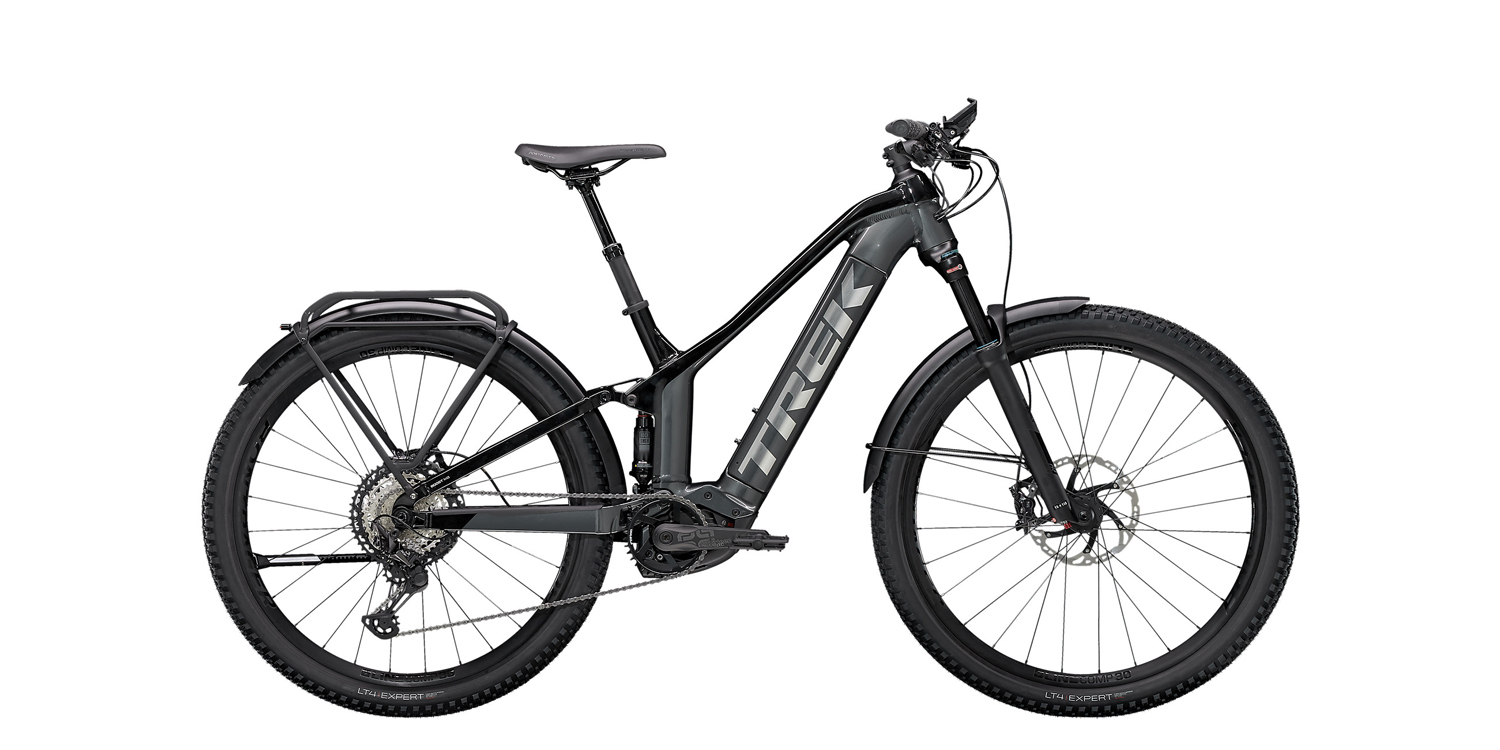
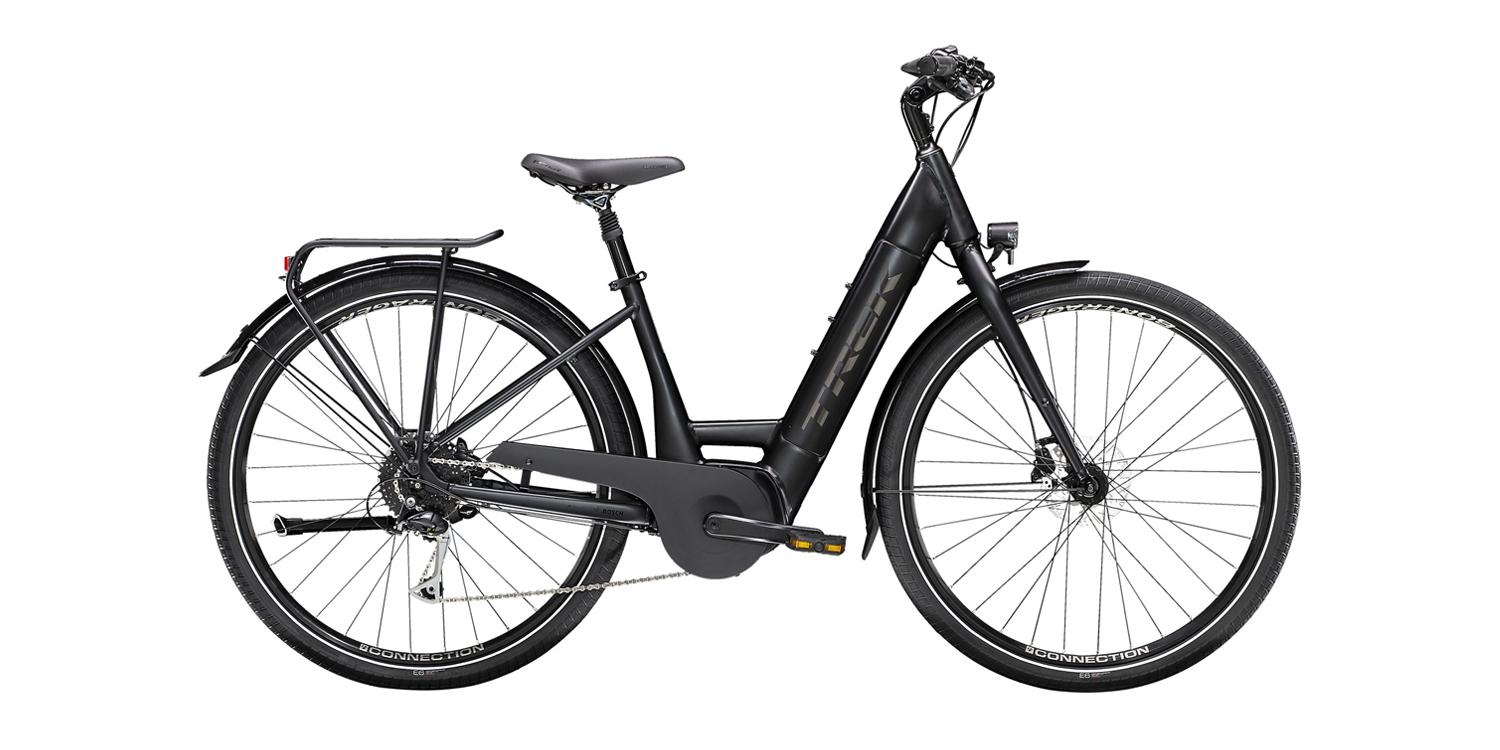
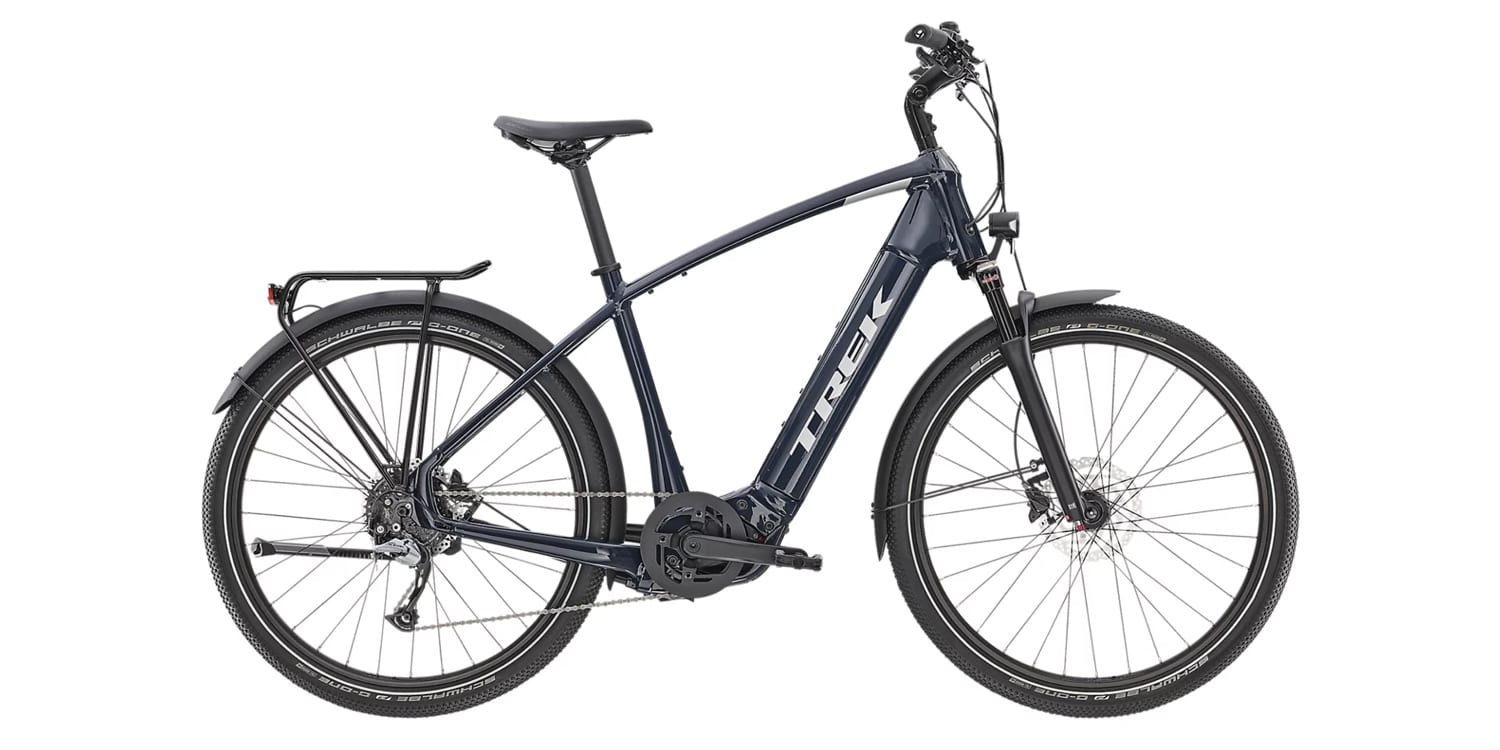
Jack says
Hey Court!
Super great review! You really highlight the (lack of) noise from the motor, which is my biggest question.
Of course I have to ask the question – what’s the power like compared to the Creo, which seems like the most obvious competitor. Has brand S been one-upped by this new contender? Certainly seems like it from the noise perspective. If it offers more power, seems like we have a real challenge to the Creo’s road/gravel throne.
Full disclosure, I have a Creo SL, that over time has evolved to be equipped pretty close to the same as this one… right down to the ‘chunky’ SRAM brake noise that you can hear well with headphones. :)
Ride safe!
Jack
Court says
Hello, Jack!
I would say that they are very close, and it has been so long since I rode the SL models from Specialized… it’s difficult for me to say. I was very impressed by the Trek Domane+ SLR 9, to the point where it seemed better than the Creo. Trek has been doing amazing stuff in recent years. I think Specialized is very cool, but Trek dealers are so friendly and the company just seems organized and professional. It sounds like you’re having a blast with your Creo! I bet there’s a Trek store nearby, maybe you can go for a test ride and report back with your opinion on the MAHLE from them vs. the TQ from Trek :D
Rock on!
Jack says
Hey Court!
I’ll do just that – these don’t seem widely available just yet, but the minute they are in Dallas, I’m all over it and will report back vs the Creo!
I don’t video well (face made for radio, LOL), but I’ll write something as soon as I can!
Court says
Awesome! I look forward to reading your thoughts Jack. It’s a comparison that a lot of people are curious about, I wish I could meet you at the shop and we could have a conversation. Maybe someday, I’m stuck in Canada at the moment, trying not to freeze :D
Anonymous says
I came to this seeking a head-to-head comparison between the Specialized Creo & this new Trek Domane+SLR – do you plan to publish something like that?
Court says
Perhaps I’ll write something like that in the forums eventually. Been traveling for work a lot recently and just have the compare tool, which shows specs. You can watch the two videos. For me, the bikes were very comparable. I was impressed by both systems but got very excited about TQ because Trek has really earned my trust recently with their depth of products, stable dealer network, and great warranty.
Allan says
I have a Specialized Creo as well, and would be interested in a comparison between the two bikes. Court, if you could get the bike from Trek Coquitlam again I’d be more than happy to meet up so you could do a video of both bikes in a comparison video. We never did connect last year. I love the idea of the Domane+ and think I’d be lot happier with it than my Creo.
Court says
Oh man! Yeah, we were planning to connect and I actually have a calendar reminder. It was so great meeting you (at DOST HQ I think?) let’s try for this. Are you free tomorrow afternoon? I think this week is going to be beautiful, give me a text or call any time. Thanks Allan!!
Jack says
OOOH – I hope you guys have video for us soon! :)
Allan says
Sorry, I didn’t check until now so I’m sure tomorrow afternoon has passed. I will send you a pm with my cell again. I know I had yours but no longer have it. If you want to meet up some time for a ride I’m game, and of course I’d love to do a video of the Creo and Domane+. It would be cool to be in a video, that way everyone who I’ve met on the forums here could see me!
Court says
Yeah! Please contact me Allan, I tried calling you today and left a message. My phone number is 650-930-0342
Dorkyman says
So this is what $13K gets you? Yow!
But it’s nice to have such a wide assortment of bikes and price points available for the enthusiast. Still, to me it’s a bit like a purist comparing the pros and cons of the McLaren seat-belt buckle mechanism to the one in a Ferrari.
To each his own.
Paul says
Does the Domane+ SLR 6 integrate with a Garmin head unit (1040 solar)? I noticed that there isn’t a place to install the DuoTrap in the chainstay like previous Trek bicycles. I’m curious if the Garmin will be able to read information from the Domane+ computer.
I’d also like to know if the Garmin 1040 solar will pair with the Shimano Di2 system and allow the Enhanced Di2 system setup and information like it does for the Edge 1030?
There seems to be a shortage/backorder for the range extender battery pack (as in “there not available with no timeline provided for shipment”) which is disappointing . . . I’m not sure what the hangup is but one would think Trek would have a better grip on their supply chain when they advertise the extender in their literature.
Court says
Hi Paul, yeah it’s interesting that many of the Range Extender options for Trek, Specialized, and others are frequently out of stock. I don’t have answers for your Garmin questions, but perhaps someone else will chime in, or you can re-post in the Trek ebike forums here.
David says
Hi, nice summary. Can you tell me what the bike is like with the assist turned off? Is there any noticeable motor friction? I have a Bosch powered eMTB which is like riding a tank if you turn assist off!! thanks
Court says
Hi David! In my experience, the reduced weight of the battery and motor for the TQ system makes this electric bike feel much more natural when pedaled without assist. It’s responsive, there’s no extra friction when pedaling, and the weight is pretty low. Hope this helps, but you can also usually find a Trek dealer to take a test ride and see for yourself!
John says
I have the “more affordable version”, haha. The SLR6, with Shimano Di2 and the road wheels/tires (32mm). It rolls really well without any assist at all – just like a normal road bike. I have 2 acoustic road bikes and a gravel bike, and the Domane is very comparable, except perhaps slightly slower on steep grades. But that’s what the assist is for. At 29 lbs with pedals, it is only 11 lbs heavier than my lightest – a Spec Roubaix Expert.
As for pairing the bike with other devices, not possible. But you can pair the Trek phone app with HR monitors. The app has it’s own navigation tracking and gives all sorts of metrics on instantaneous/average watts provided by both Rider and Motor. The motor tuning itself is fantastic, allowing one to tune all three levels as to the amount of assist provided, the max, and how quickly you want it to react to rider input. In use it is almost telepathic in the nature of power delivery.